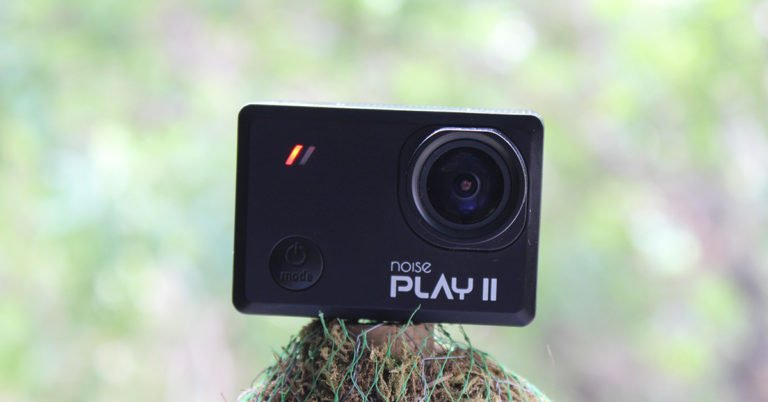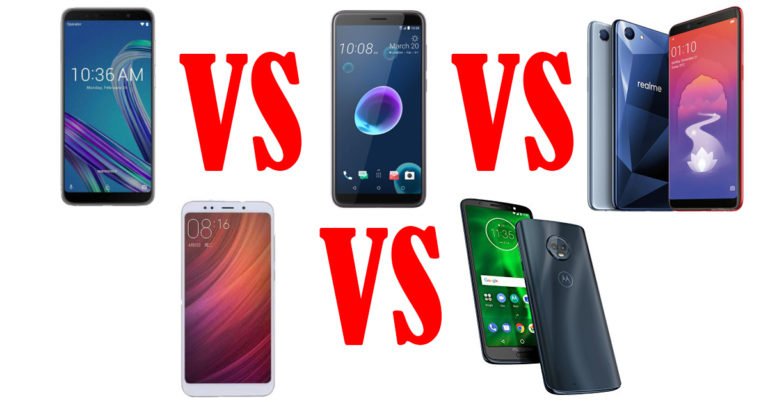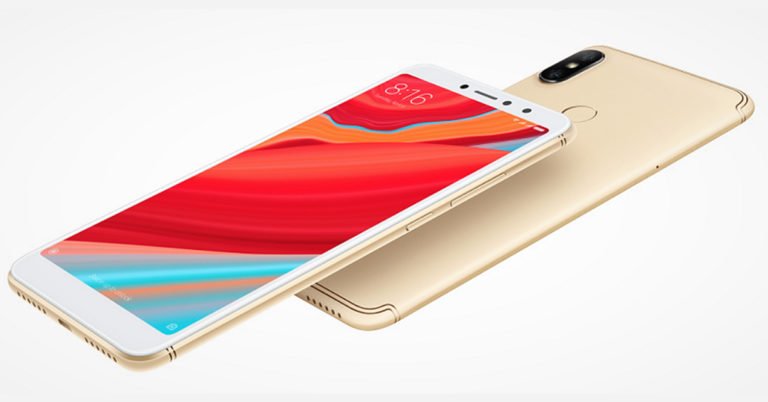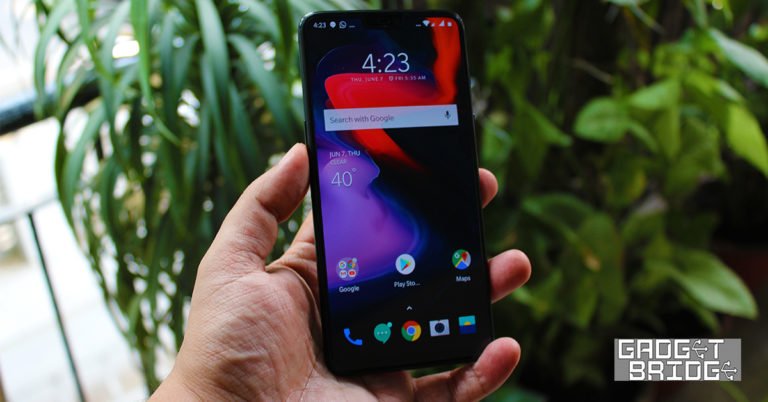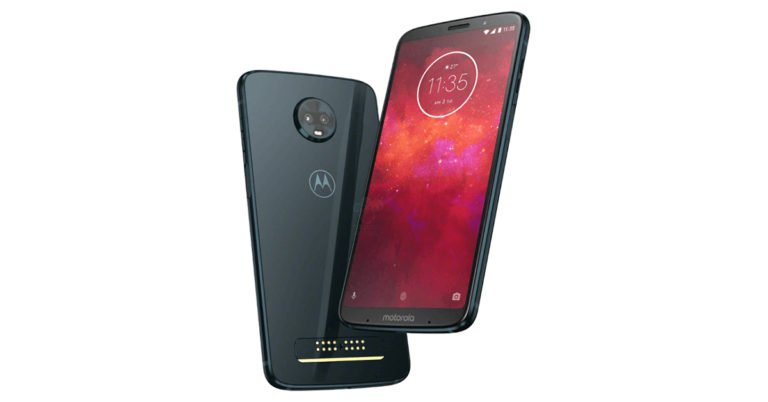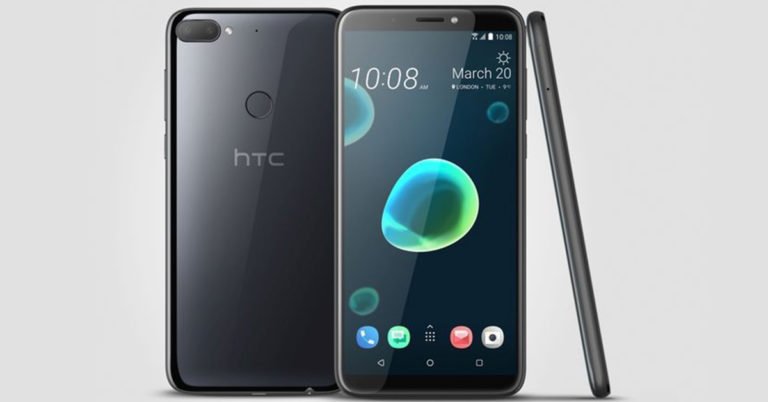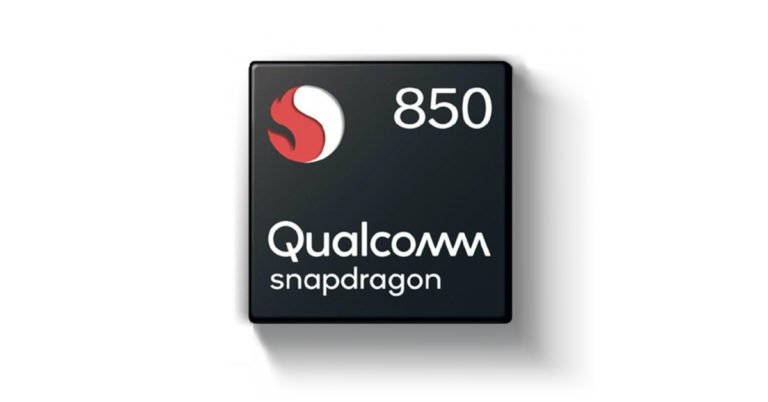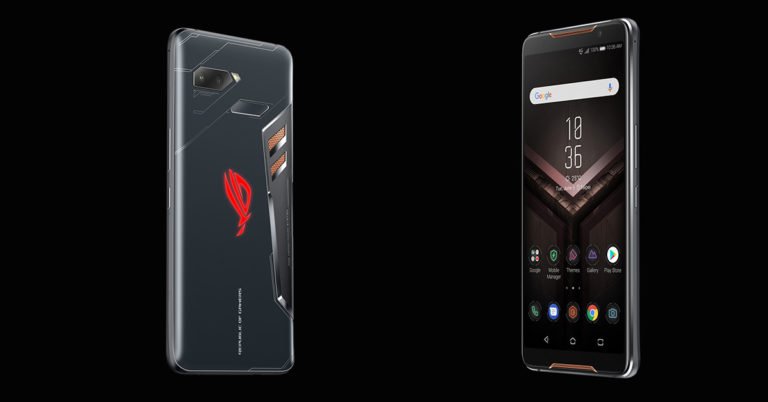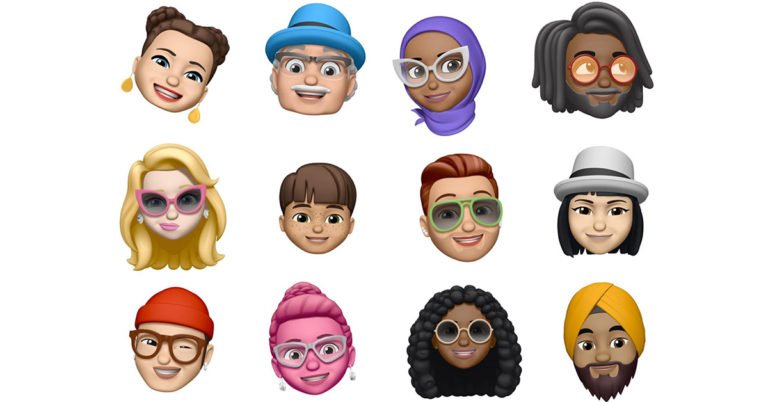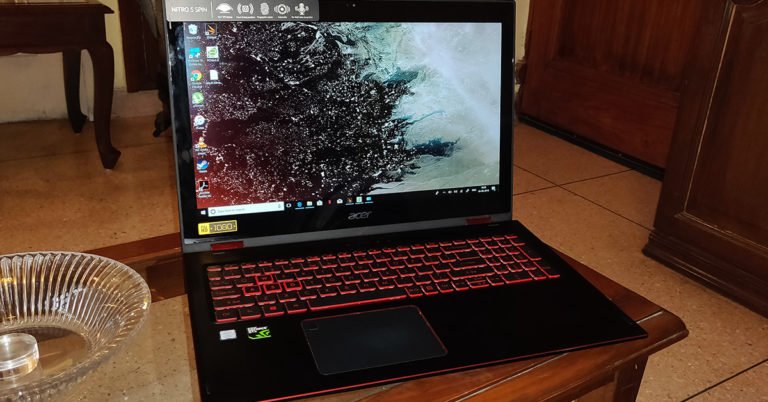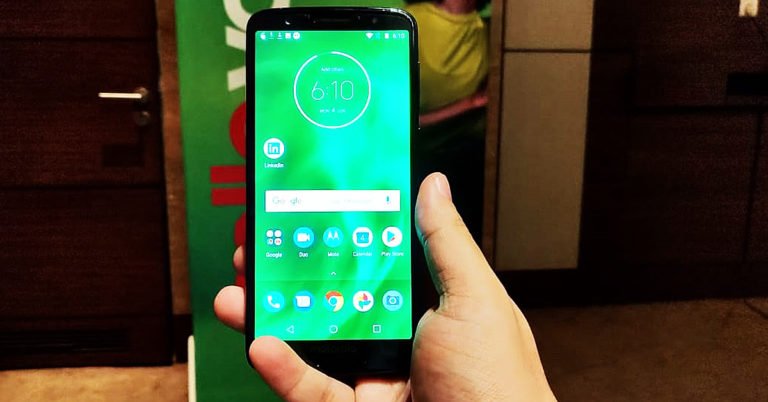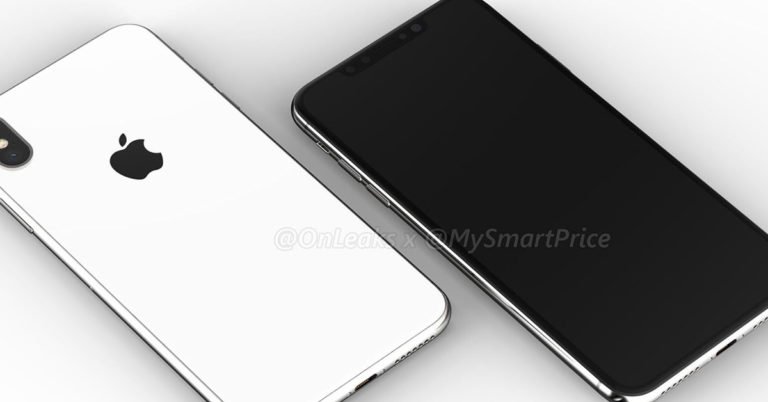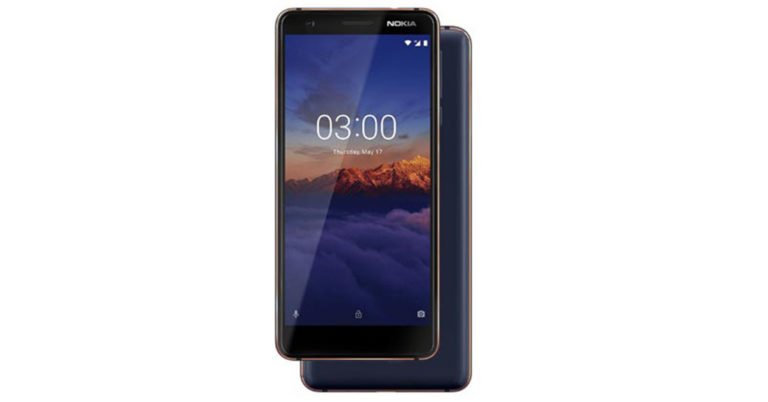Google Pixel owners will soon be able to choose the colour of their launcher: Report
Technology giant Google may soon let the users of Google Pixel series of smartphones select the colour of their smartphone’s launcher from light to dark mode according to a report in Android Police.
Till now, the launcher in Google Pixel phones automatically turned dark when users had a dark wallpaper on. This is even the current situation. Your theme depends on your wallpaper. So if your wallpaper is dark, so are your folder icons, app drawers and quick setting. Similarly, if your wallpaper is white in colour or has a neutral shade, the launcher your Pixel smartphone will automatically turn white.
Much to the frustration of many users, they cannot manually select one among the two themes if they have a preference for it. But it seems like now Google is changing this. This is because someone had added an item in the developer preview in March this year in which they had asked for a toggle to choose the theme.
And Google has now marked that particular item as ‘fixed’ in the bug tracker. Google’s reply says, “We have added support for a Dark theme to be applied to quick settings and launcher under Settings -> Display -> Device Theme. It will be available in a future Android build.”
So with this, users will be to go to the device’s settings, and make customizations to their launcher settings under Device Theme.
In other words, you will be able to select the dark or light launcher based on your preference and you will not have to select a particular wallpaper to enable it.
However, if users are expected to enable or customise these settings in Google Pixel phones, then it is definitely a possibility that the default settings will be exactly as they are right now – light launcher with white or neutral wallpapers and dark launcher with dark coloured wallpapers. The report by Android Police says that this change may arrive with the next developer preview, but one can expect it to be live by the time Android 9.0 officially rolls out.
[Video] OnePlus Bullets Wireless headphones Unboxing
OnePlus Bullets Wireless headphones were announced at an event in london recently, these will be available in the Indian market at Rs 3,990.
Tech Specs:
- Magnetic Control
- On wire volume keys and call button
- Quick charge function
- 8 hours battery backup
- 10 min charge, 5 hour battery backup quick charge
- Water resistant
- Bluetooth 4.1
- 10 Meter effective range
Reliance JIO and Airtel to live stream Fifa World Cup 2018 matches for free
Today is the opening ceremony and first match of the largest football sporting event in the world. Yes, the Fifa World Cup 2018 will commence tonight as Russia takes on Saudi Arabia at 8:30 PM. The Fifa action is so big that the leading Indian telecom players could not stay away from it.
Both, Airtel and Reliance JIO have announced that their customers can watch the matches for free on their respective live TV apps on the mobile phones. All the matches of the Fifa world cup would be available to Airtel and Reliance JIO customers between June 14 to July 15, 2018.
Along with English and Hindi commentary, these matches will be available in all the local languages on the Airtel app. Over that, users will have access to the complete match schedules, summary and behind the scenes footage here. The Airtel TV app is available on the Android and iOS app stores.
Reliance JIO is also giving similar viewership to its customers where they can also enjoy this premium service for no additional cost. Users on both iOS and Android smartphones can download their app and enjoy uninterrupted coverage of the Fifa World Cup 2018.
Along with the Fifa World Cup 2018 live coverage, both the telecom players have announced that they will also live stream India Vs Afghanistan cricket matches on their respective platforms, too. Seems like a good day for sports enthusiasts and if you are a customer of Reliance JIO or Airtel then you are in luck as you can watch the matches (cricket or football) from anywhere for free.
Coming to think of it, network issues could play spoil sport as Airtel’s 4G is very patchy even in cities like Delhi, Mumbai and Gurugram. On top of that at times, rains do short circuit mobile towers, which will again hamper connectivity. Fingers crossed is all we can say, if you are on an Airtel network.
Vivo Nex S and Nex A smartphones with bezel-less, notch-less display and pop-up selfie camera launched: Specs price and other details
When Vivo’s concept smartphone Apex was showcased at the Mobile World Congress 2018, it did get some eyeballs rolling. The smartphone’s prototype was earlier seen at the Consumer Electronics Show this year and managed to grab headlines even then. The reason was its ‘half-screen in-display fingerprint scanning technology.’ With this technology, instead of putting one’s thumb or finger on the thumbnail-sized icon on the device to unlock it, one can do so by placing their finger anywhere on the smartphone’s display – or at least half of it. And now, the Chinese smartphone maker has announced its Nex S smartphone, which is based on the Apex concept phone.
Although Nex S does not have Apex’s ‘half-screen in-display fingerprint scanning technology,’ there are a number of features in it that we saw in Apex. To put in Vivo’s words, the Nex S smartphone “fulfils the bezel-less dream.” The Nex S smartphone – like the Apex concept phone – comes without the Notch on its display and we found this to be very refreshing. This also means that the Nex S smartphone has a screen-to-body ratio of 91.24%. That’s not all. Vivo Nex S also comes with the company’s glass-vibrating Screen Soundcasting technology, that was also seen the in Apex concept phone. This technology replaces the earpiece speaker found in devices.
Instead of Apex’s half-screen in-display fingerprint scanning technology, Vivo Nex S comes with an in-display fingerprint sensor. The difference between the two is only in the area covered. Although in-display fingerprint sensor is a feature we have already seen in Vivo X21, Vivo claims that its third generation sensor makes the speed faster.
Specifications
Speaking about other specifications of the Vivo Nex S Smartphone it features a 6.59-inch full-HD+ Super AMOLED display and is powered by Qualcomm’s Snapdragon 845 processor – which the latest in the market. Vivo Nex S smartphone comes with 8GB RAM and comes in 128GB and 256GB storage options. It houses a 4000mah battery and sport a 12MP primary rear camera with f/1.8 lens and a 5MP secondary rear camera with f/2.4 module. For selfies, there is an 8MP pop-up front facing camera with f/2.0 lens. The smartphone run Android 8.1 Oreo skinned with Funtouch OS 4.0.
Other than this, the company also launched a younger sibling, Nex A smartphone, that has a number of features similar to Vivo Nex S, but there are things that set them apart too. For starters, the Nex A is powered by Snapdragon 710 processor clubbed with 6GB RAM and offers 128GB inbuilt storage. A major difference is that unlike Nex S, Vivo Nex A has a fingerprint sensor on the rear panel instead of the in-display one. The display, camera setups and battery is the same as Vivo Nex S.
Pricing
Both the smartphones are currently only available in China. While the Vivo Nex S smartphone with 8GB RAM and 256GB internal storage is priced at CNY 4,998 (roughly Rs 53,000), and its 8GB RAM and 128GB storage variant costs CNY 4,498 (roughly Rs 47,500). The Vivo Nex A, which is only available in 6GB RAM/128GB on-board storage option, bears a price tag of CNY 3898 (roughly Rs 41,200).
[Video] Comio X1 Note Unboxing and First Impressions
Comio X1 Note Tech Specs:
- MediaTek MT8735 1.45GHz Quad-Core processor with Mali-T720 GPU
- 6-inch (2160 x 1080 pixels) FHD+ display with 2.5D Curved Glass
- 3GB RAM with 32GB internal memory, expandable by up to 128GB with microSD card
- Dual SIM (nano + nano + microSD)
- 13MP rear camera with LED Flash and f/2.2 aperture. 5MP secondary rear camera with f/2.4 aperture
- 8MP front-facing camera, f/2.4 aperture with LED flash in front too
- Fingerprint sensor
- 3.5mm audio jack, FM Radio
- 4G VoLTE, WiFi 802.11 a/ b/g/n, Bluetooth 4.0, GPS, USB OTG
- 2,900mAh battery
- Android 8.0 (Oreo)
Uber Lite launched in India: Everything you need to know
Uber Technologies has launched its Uber Lite app in India — a move which many are saying has been done to get more users on board.
In its initial phase, Uber Lite will only be launched for Android smartphone users in Delhi, Jaipur and Hyderabad. This will be followed by the app getting rolled out across India during summer and then Uber Lite will be launched in other countries.
What makes Uber Lite different from the regular Uber app is the fact that it is less than 5MB. It is claimed to have a response time of less than 300 milliseconds and can work perfectly well in areas with low connectivity.
The company went on to say in a statement that Uber Lite works on less than 5% Android devices.
Besides this, the app retains most other features of the main Uber app. It hasn’t compromised on the safety features and comes with an emergency button and also lets users share their route with friends.
However, some features are different. For instance, in the absence of GPS, the app might suggest a nearby landmark where the cab can come to pick the user up. Similarly, the app already has the city’s most popular places so that they appear even when the user is offline.
According to Uber Technologies, maps are not loaded by default in Uber Lite and are available at a tap when user needs them because this ensures that the app is light and works quickly even in low network connectivity.
“After extensive research with our riders, it was obvious we couldn’t just make a smaller copy of Uber. We needed to reimagine the experience for India and key markets around the world. The result is Uber Lite,” said Peter Deng, Head of Rider Product, Uber.
Xiaomi Redmi 6 launched with 5.45-inch HD+ display: Price, specs and more
There were leaks and teasers flying about this phone and finally the Chinese maker has brought it to life. Called Xiaomi Redmi 6, the smartphone has been launched in China and integrates some new features that will be seen on upcoming Xiaomi smartphones (too) like the face unlock feature. Seems like Xiaomi is using AI in this device for various things ranging from the face unlock to it the cameras.
Xiaomi Redmi 6 specifications
The event held on Tuesday showcased the Xiaomi Redmi 6 with a HD+ 5.45-inch touchscreen with a resolution of 720×1,440 pixels. The aspect ratio is set at 18:9 and 80.7 percent screen to body ratio is what this phone has. As for the cameras, the Xiaomi Redmi 6 has dual rear cameras that are stacked just like the ones found on the OnePlus 5T. These are powered by 12MP plus 5MP sensors and both sport 1.25 micron pixels with AI firmware. Spin the phone around and one will find that the company has placed a 5MP front snapper.
Under the hood Xiaomi has given this smartphone, not a Snapdragon, but a MediaTek Helio P22 octa-core CPU which has speeds up to 2.0GHz. The Xiaomi Redmi 6 is available in two variations. One with 3GB RAM and 32GB memory and other has 4GB RAM and 64 GB memory. This seems to be the usual norm for all budget smartphones these days.
Storage is expandable in the Xiaomi Redmi 6 and one can insert up to 256GB microSD card in this smartphone, over the already available memory inside. As for the battery life, while others in the category are giving more than 3,400 mAh, Xiaomi is still stuck on 3,000 mAh. Other features of the mobile phone include 4G LTE, Wi-Fi, GPS, micro USB, Bluetooth 4.2 and 3.5mm audio jack. Xiaomi Redmi 6 weighs 146 grams and runs Android Oreo 8.1 with its own MIUI skin on top.
Xiaomi Redmi 6 Price and availability
The price of the Xiaomi Redmi 6 3GB RAM/32 GB storage variant has been kept at CNY 799 (that is approximately Rs 8,500) and the 4 GB RAM/64GB storage version has a price tag of CNY 999 (Rs 10,500 approximately). It will start selling in China on June 15, however there is no word of its launch in India. Nonetheless, going by the trend that this Chinese maker follows, they should bring the phone to our shores in a months’ time.
Selfie obsession: Two teenagers drown in river Tapi
While the smartphone has made life easier for many, it has caused a lot of trouble for some too. Starting from distracted driving to selfie deaths, the list just goes on. Adding to the selfie death list, two teenagers from Surat drowned in the Tapi river while trying to click a selfie. The two boys were hanging on a rope over the river when they fell in to it while capturing a selfie.
As per a report in Indian Express, two other boys who jumped in the river to save them were rescued by the bystanders and are currently undergoing treatment at New Civil Hospital. The four friends, Ikhlak Shaikh, Sohel Khan, Mohammed Zaid and Mohammed Kaif had gone to the causeway over the river. Here Shaikh and Zaid lost their balance and fell into the river while taking a selfie.
Bodies of the boys were later recovered by the fire brigade officers and declared the boys had died to due to drowning in the river. As said before selfie deaths are not new and have been happening in India and abroad at a constant pace. There needs to be some kind of education program running for people that tells them how to be safe and what not to do, especially the younger generation who takes thrills while clicking an action selfie in deadly environments.
Last year two youth in Mumbai died too taking a selfie at a railways station. Delhi has also seen its share of deaths while people are taking selfie on the railways tracks. Recently a young Indian boy just out of his teens died slipping from a 40-meter cliff in Australia. Parents should also take note of the at-times menace called a selfie and tell their children always to be safe when clicking one alone of with a group of people.
5 reasons why not to buy the Xiaomi Redmi Y2
Xiaomi might be leading smartphone player currently in India, but with the latest launch they do seem to have lost the plot quite a bit. They recently launched the Redmi Y2 in the Indian market, which is just a remodelled version of the Xiaomi Redmi S2 that was showcased in China a little while ago.
The Xiaomi Redmi Y2 failed to excite us on multiple levels and to us this phone is not a worthy buy at all, because of the heavy competition it faces from its own brother the Note 5 Pro and other brands like Realme, Honor and Motorola. Specs to price-wise we found this smartphone to be mediocre and here are 5 reasons why you should skip this smartphone:
Price: The Xiaomi Redmi Y2 is priced at Rs 9,999 for the 3GB RAM and 32 GB memory variant, and Rs 12,999 for the 4 GB RAM and 64 GB memory version. It is eating into its own siblings range, the Redmi Note 5, which is priced at Rs 9,999 for 3GB/32GB, however the Redmi Note 5 4GB/64GB version is a thousand rupees cheaper. Over that, the good looking Realme 1 is thousand rupees cheaper than both of them, priced at Rs 8,999 for 3GB/32GB piece and Rs 10,990 for 4GB/64GB version. Why do you want to spend more?
Seen form factor: Putting it simply, the Xiaomi Redmi Y2 has no great shakes when it comes to its form factor. The dual lens setup has become mundane and the plain jane looks just don’t work these days. There is no zing in this phone, which the youth wants these days. In a sea of great looking phones like the one from Realme and Moto G6 Play, the Y2 looks quite dreadful.
Plastic body: While most phone manufacturers like Motorola and Honor are giving glass backs or metal bodies, Xiaomi is busy cutting corners and is providing a plastic unibody thats looks tacky and not appealing. You are better of purchasing a top of the line glass back than plastic, if you as us.
Not a Full HD Screen: The 5.99-inch display on the Xiaomi Redmi Y2 supports only a 720×1,440 pixels resolution. Which is not even close to what its sibling at a cheaper price gives. The Redmi Note 5 has FHD+ graphics 1,080×2,160 pixels display, which is much higher than the Y2. Don’t know what Xiaomi was thinking when building this phone.
Smaller battery: This is probably the biggest flaw of Xiaomi Redmi Y2, it just does not have that much battery juice. While Realme 1 gives you a powerful 3,410 mAh battery, Moto G6 Play is even better at 4,000 mAh. the Xiaomi Redmi Y2 has just 3,080 mAh at a higher or similar price. Most want longer lasting devices and this is definitely not one of them.
Top 10 smartphones with big battery life
Tired of battery woes and can’t wait to replace your smartphone? We have made a list of 10 recently launched smartphones you can choose from. Here’s a look at our list:
Huawei P20 Pro
We won’t be surprised if you get reminded of triple rear cameras the moment you hear of Huawei P20 Pro. Theo 40MP+20MP+8MP triple rear camera setup is the key feature that makes the smartphone stand out. But it isn’t the only feature of the smartphone worth talking about. Huawei’s flagship boasts of a massive 4000mAh battery as well. Huawei P20 Pro is priced at Rs 64,999 and is powered by 1.8GHz octa-core processor clubbed with 6GB RAM and 128GB onboard storage. The smartphone runs Android 8.1 Oreo skinned with EMUI 8.1 and features a 6.10-inch touchscreen display.
 Moto G6 Play
If you are looking for a big battery smartphone and also want phone that has been launched recently, then Moto G6 Play is the right choice for you. Priced at Rs 11,999, the newly launched smartphone packs a 4000mAh battery and features a 5.7-inch HD+ display. Powered by Qualcomm Snapdragon 430 processor clubbed with 3GB RAM and 32GB of internal storage, the smartphone runs Android 8.0 Oreo out of the box. It comes with 13MP rear camera and an 8MP front facing snapper for selfies and video calls.
Coolpad Note 6
Coolpad Note 6 comes in two storage variants – 32GB and 64GB. However, both these variants have the same 3GB RAM. Coolpad’s smartphone packs a 4070mAh battery and features a 5.5-inch full-HD display. Running Android 7.1 Nougat, it is powered by an octa-core Qualcomm Snapdragon 435 processor and sports a dual front camera setup with 8MP and 5MP sensors along with a 13MP rear camera. While the 32GB variant of the smartphone is priced at Rs 8,999, the 64GB variant costs Rs 9,999.
InFocus Vision 3 Pro
Priced at Rs 6,999, InFocus Vision 3 Pro comes with a 4000mAh battery and features a 5.7-inch HD+ screen. Powered by 1.3 GHz quad-core Mediatek M6373 Cortex-A53 processor paired with 2GB RAM, the smartphone offers 16GB of internal storage and can hold microSD cards of up to 64GB. The Android 7.0 Nougat based smartphone comes with 13MP+5MP dual rear cameras and an 8MP selfie camera.
Moto G6 Play
If you are looking for a big battery smartphone and also want phone that has been launched recently, then Moto G6 Play is the right choice for you. Priced at Rs 11,999, the newly launched smartphone packs a 4000mAh battery and features a 5.7-inch HD+ display. Powered by Qualcomm Snapdragon 430 processor clubbed with 3GB RAM and 32GB of internal storage, the smartphone runs Android 8.0 Oreo out of the box. It comes with 13MP rear camera and an 8MP front facing snapper for selfies and video calls.
Coolpad Note 6
Coolpad Note 6 comes in two storage variants – 32GB and 64GB. However, both these variants have the same 3GB RAM. Coolpad’s smartphone packs a 4070mAh battery and features a 5.5-inch full-HD display. Running Android 7.1 Nougat, it is powered by an octa-core Qualcomm Snapdragon 435 processor and sports a dual front camera setup with 8MP and 5MP sensors along with a 13MP rear camera. While the 32GB variant of the smartphone is priced at Rs 8,999, the 64GB variant costs Rs 9,999.
InFocus Vision 3 Pro
Priced at Rs 6,999, InFocus Vision 3 Pro comes with a 4000mAh battery and features a 5.7-inch HD+ screen. Powered by 1.3 GHz quad-core Mediatek M6373 Cortex-A53 processor paired with 2GB RAM, the smartphone offers 16GB of internal storage and can hold microSD cards of up to 64GB. The Android 7.0 Nougat based smartphone comes with 13MP+5MP dual rear cameras and an 8MP selfie camera.
 Xiaomi Redmi Note 5 Pro
Probably the most talked about budget smartphone of the year is Xiaomi Redmi Note 5 Pro. The smartphone has great specifications and is available in two storage variants – 4GB RAM/64GB storage and 6GB RAM/64GB storage. While the 4GB RAM version is priced at Rs 13,999 and the 6GB RAM variant is priced at Rs 16,999. With a 4000mAh battery, it is a good option for those who want to buy a smartphone with a long lasting battery.The smartphone features a 5.99-inch full-HD display and is powered by a Qualcomm Snapdragon 636 processor. For imaging duties, Xiaomi Redmi Note 5 Pro comes with 12MP+5MP dual rear cameras and a 20MP front facing camera.
Infinix Hot S3
The smartphone from Infinix packs a 4000mAh battery and features a 5.65-inch HD+ 2.5D Full View display. Powered by an octa-core Qualcomm Snapdragon 430, it comes in two storage variants – 3GB RAM/32GB storage and 4GB RAM/64GB storage. Running on Android Oreo skinned with XOS 3.0, it comes with a 13MP rear camera and a 20MP selfie camera. The 3GB RAM variant of the phone is priced at Rs 8,999 and the 4GB RAM version is priced at Rs 10,999.
Xiaomi Redmi Note 5 Pro
Probably the most talked about budget smartphone of the year is Xiaomi Redmi Note 5 Pro. The smartphone has great specifications and is available in two storage variants – 4GB RAM/64GB storage and 6GB RAM/64GB storage. While the 4GB RAM version is priced at Rs 13,999 and the 6GB RAM variant is priced at Rs 16,999. With a 4000mAh battery, it is a good option for those who want to buy a smartphone with a long lasting battery.The smartphone features a 5.99-inch full-HD display and is powered by a Qualcomm Snapdragon 636 processor. For imaging duties, Xiaomi Redmi Note 5 Pro comes with 12MP+5MP dual rear cameras and a 20MP front facing camera.
Infinix Hot S3
The smartphone from Infinix packs a 4000mAh battery and features a 5.65-inch HD+ 2.5D Full View display. Powered by an octa-core Qualcomm Snapdragon 430, it comes in two storage variants – 3GB RAM/32GB storage and 4GB RAM/64GB storage. Running on Android Oreo skinned with XOS 3.0, it comes with a 13MP rear camera and a 20MP selfie camera. The 3GB RAM variant of the phone is priced at Rs 8,999 and the 4GB RAM version is priced at Rs 10,999.
 Asus Zenfone Max Pro M1
Asus touted battery as one among the key features of its Zenfone Max Pro M1 smartphone when it was launched this year. Powered by a massive 5000mAH battery, the smartphone is available in two storage variants – 3GB RAM/32GB onboard storage and 4GB RAM/64GB inbuilt storage. While the former is priced at Rs 10,999, the latter is priced at Rs 12,999. The smartphone runs Android 8.1 Oreo and features a 5.99-inch full HD+ display. It is powered by Qualcomm Snapdragon 636 processor and comes with 13MP+5MP dual rear cameras and an 8MP selfie camera.
Blackberry Motion
BlackBerry Motion was found listed on Flipkart in January 2018. Priced at Rs 42,999, the smartphone comes with a 4000mAh battery which supports QuickCharge 3.0 and features a 5.5-inch Full HD screen. Powered by Qualcomm Snapdragon 624 processor clubbed with 4GB RAM, the smartphone offers 32GB internal storage and can hold microSD cards of up to 256GB. It comes with a 12MP rear camera and an 8MP front facing camera. Although there has been no official announcement on BlackBerry Motion’s launch yet, the smartphone is still available on Amazon India’s website at a price of Rs 34,700.
https://www.amazon.in/BlackBerry-Motion-mobile/dp/B077RLT9F8/
Smartron t.phone P
This one is for Sachin Tendulkar’s fans. Smartron t.phone P comes with a massive 5000mAh battery and Android 7.1.1 Nougat. The smartphone features a 5.2-inch HD IPS display and is powered by an octa-core Qualcomm Snapdragon 435 processor clubbed with 3GB RAM. The phone offers 32GB of onboard storage and can hold microSD cards of up to 128GB.Smartron t.phone P comes with a 13MP rear camera and a 5MP selfie camera and is priced at Rs 7,999.
iVooMi i2
iVooMi i2 smartphone boasts of a 4000mAh battery and features a 5.45-inch HD+ IPS FullView display. Powered by 1.5GHz quad-core Mediatek MTK6739 processor paired with 3GB RAM, the smartphone offers 32GB of internal storage and can hold microSD cards of up to 128GB. The smartphone sports a dual rear camera setup with 23MP and 2MP sensors and also has an 8MP selfie camera. It runs Android 8.1 Oreo out of the box and is priced at Rs 7,499.
Asus Zenfone Max Pro M1
Asus touted battery as one among the key features of its Zenfone Max Pro M1 smartphone when it was launched this year. Powered by a massive 5000mAH battery, the smartphone is available in two storage variants – 3GB RAM/32GB onboard storage and 4GB RAM/64GB inbuilt storage. While the former is priced at Rs 10,999, the latter is priced at Rs 12,999. The smartphone runs Android 8.1 Oreo and features a 5.99-inch full HD+ display. It is powered by Qualcomm Snapdragon 636 processor and comes with 13MP+5MP dual rear cameras and an 8MP selfie camera.
Blackberry Motion
BlackBerry Motion was found listed on Flipkart in January 2018. Priced at Rs 42,999, the smartphone comes with a 4000mAh battery which supports QuickCharge 3.0 and features a 5.5-inch Full HD screen. Powered by Qualcomm Snapdragon 624 processor clubbed with 4GB RAM, the smartphone offers 32GB internal storage and can hold microSD cards of up to 256GB. It comes with a 12MP rear camera and an 8MP front facing camera. Although there has been no official announcement on BlackBerry Motion’s launch yet, the smartphone is still available on Amazon India’s website at a price of Rs 34,700.
https://www.amazon.in/BlackBerry-Motion-mobile/dp/B077RLT9F8/
Smartron t.phone P
This one is for Sachin Tendulkar’s fans. Smartron t.phone P comes with a massive 5000mAh battery and Android 7.1.1 Nougat. The smartphone features a 5.2-inch HD IPS display and is powered by an octa-core Qualcomm Snapdragon 435 processor clubbed with 3GB RAM. The phone offers 32GB of onboard storage and can hold microSD cards of up to 128GB.Smartron t.phone P comes with a 13MP rear camera and a 5MP selfie camera and is priced at Rs 7,999.
iVooMi i2
iVooMi i2 smartphone boasts of a 4000mAh battery and features a 5.45-inch HD+ IPS FullView display. Powered by 1.5GHz quad-core Mediatek MTK6739 processor paired with 3GB RAM, the smartphone offers 32GB of internal storage and can hold microSD cards of up to 128GB. The smartphone sports a dual rear camera setup with 23MP and 2MP sensors and also has an 8MP selfie camera. It runs Android 8.1 Oreo out of the box and is priced at Rs 7,499.
 Moto G6 Play
If you are looking for a big battery smartphone and also want phone that has been launched recently, then Moto G6 Play is the right choice for you. Priced at Rs 11,999, the newly launched smartphone packs a 4000mAh battery and features a 5.7-inch HD+ display. Powered by Qualcomm Snapdragon 430 processor clubbed with 3GB RAM and 32GB of internal storage, the smartphone runs Android 8.0 Oreo out of the box. It comes with 13MP rear camera and an 8MP front facing snapper for selfies and video calls.
Coolpad Note 6
Coolpad Note 6 comes in two storage variants – 32GB and 64GB. However, both these variants have the same 3GB RAM. Coolpad’s smartphone packs a 4070mAh battery and features a 5.5-inch full-HD display. Running Android 7.1 Nougat, it is powered by an octa-core Qualcomm Snapdragon 435 processor and sports a dual front camera setup with 8MP and 5MP sensors along with a 13MP rear camera. While the 32GB variant of the smartphone is priced at Rs 8,999, the 64GB variant costs Rs 9,999.
InFocus Vision 3 Pro
Priced at Rs 6,999, InFocus Vision 3 Pro comes with a 4000mAh battery and features a 5.7-inch HD+ screen. Powered by 1.3 GHz quad-core Mediatek M6373 Cortex-A53 processor paired with 2GB RAM, the smartphone offers 16GB of internal storage and can hold microSD cards of up to 64GB. The Android 7.0 Nougat based smartphone comes with 13MP+5MP dual rear cameras and an 8MP selfie camera.
Moto G6 Play
If you are looking for a big battery smartphone and also want phone that has been launched recently, then Moto G6 Play is the right choice for you. Priced at Rs 11,999, the newly launched smartphone packs a 4000mAh battery and features a 5.7-inch HD+ display. Powered by Qualcomm Snapdragon 430 processor clubbed with 3GB RAM and 32GB of internal storage, the smartphone runs Android 8.0 Oreo out of the box. It comes with 13MP rear camera and an 8MP front facing snapper for selfies and video calls.
Coolpad Note 6
Coolpad Note 6 comes in two storage variants – 32GB and 64GB. However, both these variants have the same 3GB RAM. Coolpad’s smartphone packs a 4070mAh battery and features a 5.5-inch full-HD display. Running Android 7.1 Nougat, it is powered by an octa-core Qualcomm Snapdragon 435 processor and sports a dual front camera setup with 8MP and 5MP sensors along with a 13MP rear camera. While the 32GB variant of the smartphone is priced at Rs 8,999, the 64GB variant costs Rs 9,999.
InFocus Vision 3 Pro
Priced at Rs 6,999, InFocus Vision 3 Pro comes with a 4000mAh battery and features a 5.7-inch HD+ screen. Powered by 1.3 GHz quad-core Mediatek M6373 Cortex-A53 processor paired with 2GB RAM, the smartphone offers 16GB of internal storage and can hold microSD cards of up to 64GB. The Android 7.0 Nougat based smartphone comes with 13MP+5MP dual rear cameras and an 8MP selfie camera.
 Xiaomi Redmi Note 5 Pro
Probably the most talked about budget smartphone of the year is Xiaomi Redmi Note 5 Pro. The smartphone has great specifications and is available in two storage variants – 4GB RAM/64GB storage and 6GB RAM/64GB storage. While the 4GB RAM version is priced at Rs 13,999 and the 6GB RAM variant is priced at Rs 16,999. With a 4000mAh battery, it is a good option for those who want to buy a smartphone with a long lasting battery.The smartphone features a 5.99-inch full-HD display and is powered by a Qualcomm Snapdragon 636 processor. For imaging duties, Xiaomi Redmi Note 5 Pro comes with 12MP+5MP dual rear cameras and a 20MP front facing camera.
Infinix Hot S3
The smartphone from Infinix packs a 4000mAh battery and features a 5.65-inch HD+ 2.5D Full View display. Powered by an octa-core Qualcomm Snapdragon 430, it comes in two storage variants – 3GB RAM/32GB storage and 4GB RAM/64GB storage. Running on Android Oreo skinned with XOS 3.0, it comes with a 13MP rear camera and a 20MP selfie camera. The 3GB RAM variant of the phone is priced at Rs 8,999 and the 4GB RAM version is priced at Rs 10,999.
Xiaomi Redmi Note 5 Pro
Probably the most talked about budget smartphone of the year is Xiaomi Redmi Note 5 Pro. The smartphone has great specifications and is available in two storage variants – 4GB RAM/64GB storage and 6GB RAM/64GB storage. While the 4GB RAM version is priced at Rs 13,999 and the 6GB RAM variant is priced at Rs 16,999. With a 4000mAh battery, it is a good option for those who want to buy a smartphone with a long lasting battery.The smartphone features a 5.99-inch full-HD display and is powered by a Qualcomm Snapdragon 636 processor. For imaging duties, Xiaomi Redmi Note 5 Pro comes with 12MP+5MP dual rear cameras and a 20MP front facing camera.
Infinix Hot S3
The smartphone from Infinix packs a 4000mAh battery and features a 5.65-inch HD+ 2.5D Full View display. Powered by an octa-core Qualcomm Snapdragon 430, it comes in two storage variants – 3GB RAM/32GB storage and 4GB RAM/64GB storage. Running on Android Oreo skinned with XOS 3.0, it comes with a 13MP rear camera and a 20MP selfie camera. The 3GB RAM variant of the phone is priced at Rs 8,999 and the 4GB RAM version is priced at Rs 10,999.
 Asus Zenfone Max Pro M1
Asus touted battery as one among the key features of its Zenfone Max Pro M1 smartphone when it was launched this year. Powered by a massive 5000mAH battery, the smartphone is available in two storage variants – 3GB RAM/32GB onboard storage and 4GB RAM/64GB inbuilt storage. While the former is priced at Rs 10,999, the latter is priced at Rs 12,999. The smartphone runs Android 8.1 Oreo and features a 5.99-inch full HD+ display. It is powered by Qualcomm Snapdragon 636 processor and comes with 13MP+5MP dual rear cameras and an 8MP selfie camera.
Blackberry Motion
BlackBerry Motion was found listed on Flipkart in January 2018. Priced at Rs 42,999, the smartphone comes with a 4000mAh battery which supports QuickCharge 3.0 and features a 5.5-inch Full HD screen. Powered by Qualcomm Snapdragon 624 processor clubbed with 4GB RAM, the smartphone offers 32GB internal storage and can hold microSD cards of up to 256GB. It comes with a 12MP rear camera and an 8MP front facing camera. Although there has been no official announcement on BlackBerry Motion’s launch yet, the smartphone is still available on Amazon India’s website at a price of Rs 34,700.
https://www.amazon.in/BlackBerry-Motion-mobile/dp/B077RLT9F8/
Smartron t.phone P
This one is for Sachin Tendulkar’s fans. Smartron t.phone P comes with a massive 5000mAh battery and Android 7.1.1 Nougat. The smartphone features a 5.2-inch HD IPS display and is powered by an octa-core Qualcomm Snapdragon 435 processor clubbed with 3GB RAM. The phone offers 32GB of onboard storage and can hold microSD cards of up to 128GB.Smartron t.phone P comes with a 13MP rear camera and a 5MP selfie camera and is priced at Rs 7,999.
iVooMi i2
iVooMi i2 smartphone boasts of a 4000mAh battery and features a 5.45-inch HD+ IPS FullView display. Powered by 1.5GHz quad-core Mediatek MTK6739 processor paired with 3GB RAM, the smartphone offers 32GB of internal storage and can hold microSD cards of up to 128GB. The smartphone sports a dual rear camera setup with 23MP and 2MP sensors and also has an 8MP selfie camera. It runs Android 8.1 Oreo out of the box and is priced at Rs 7,499.
Asus Zenfone Max Pro M1
Asus touted battery as one among the key features of its Zenfone Max Pro M1 smartphone when it was launched this year. Powered by a massive 5000mAH battery, the smartphone is available in two storage variants – 3GB RAM/32GB onboard storage and 4GB RAM/64GB inbuilt storage. While the former is priced at Rs 10,999, the latter is priced at Rs 12,999. The smartphone runs Android 8.1 Oreo and features a 5.99-inch full HD+ display. It is powered by Qualcomm Snapdragon 636 processor and comes with 13MP+5MP dual rear cameras and an 8MP selfie camera.
Blackberry Motion
BlackBerry Motion was found listed on Flipkart in January 2018. Priced at Rs 42,999, the smartphone comes with a 4000mAh battery which supports QuickCharge 3.0 and features a 5.5-inch Full HD screen. Powered by Qualcomm Snapdragon 624 processor clubbed with 4GB RAM, the smartphone offers 32GB internal storage and can hold microSD cards of up to 256GB. It comes with a 12MP rear camera and an 8MP front facing camera. Although there has been no official announcement on BlackBerry Motion’s launch yet, the smartphone is still available on Amazon India’s website at a price of Rs 34,700.
https://www.amazon.in/BlackBerry-Motion-mobile/dp/B077RLT9F8/
Smartron t.phone P
This one is for Sachin Tendulkar’s fans. Smartron t.phone P comes with a massive 5000mAh battery and Android 7.1.1 Nougat. The smartphone features a 5.2-inch HD IPS display and is powered by an octa-core Qualcomm Snapdragon 435 processor clubbed with 3GB RAM. The phone offers 32GB of onboard storage and can hold microSD cards of up to 128GB.Smartron t.phone P comes with a 13MP rear camera and a 5MP selfie camera and is priced at Rs 7,999.
iVooMi i2
iVooMi i2 smartphone boasts of a 4000mAh battery and features a 5.45-inch HD+ IPS FullView display. Powered by 1.5GHz quad-core Mediatek MTK6739 processor paired with 3GB RAM, the smartphone offers 32GB of internal storage and can hold microSD cards of up to 128GB. The smartphone sports a dual rear camera setup with 23MP and 2MP sensors and also has an 8MP selfie camera. It runs Android 8.1 Oreo out of the box and is priced at Rs 7,499. [Video] Moto G6 First Look and Box contents
Moto G6 is out in the Indian market at a starting price of Rs 13,999 for 3GB RAM/3GB Memory and Rs 15,999 for 4GB RAM/64GB Memory. We have with us the later one. Check out the first look video which has all the details and our views of the newly launched smartphone.
Go Noise Play 2 unboxing and first look
We got the Go Noise Play 2 and here is the unboxing and first look videos. Lot of components inside in this neat camera that retails for Rs 9,999.
Tech Specs:
| Image Sensor | ||
| 16 MP | ||
| Lens | ||
| F2.8 Aperture, 7G glass | ||
| Display | ||
| 2.0″TFT LCD Touchscreen | ||
| Ports | ||
| Mini USB , Micro HDMI, Micro SD Slot | ||
| Storage | ||
| MicroSD memory card with Class 10 or UHS-1 rating required | ||
| Up to 128GB capacity supported | ||
| Battery + Charging | ||
| Rechargeable lithium-ion battery | ||
| Battery Capacity: 1200mAh | ||
| USB Charging: DC 5V 1000 mA | ||
| APP | ||
| Android (Google Play Store) – https://play.google.com/store/apps/details?id=com.haotek.play iOS – Coming Soon | ||
| Video | ||
| Resolution | Frame Size | Frame Per Rate (fps) |
| 4K (2880*2160) | 16:9 | 24 |
| 4k (2880*2160) | 4:3 | 24 |
| QHD (2560*1440) | 16:9 | 30 |
| QHD (2560*1440) | 4:3 | 30 |
| 1296 (2304*1296)16:9 | 16:9 | 30 |
| Full HD(1920*1080)16:9 | 16:9 | 60 |
| 1080 (1920*1080) | 16:9 | 30 |
| Full HD (1440*1080) | 4:3 | 30 |
| HD 720 (1280*720) | 16:9 | 120 |
| HD 720 (1280*720) | 16:9 | 60 |
| HD 720 (1280*720) | 16:9 | 30 |
| WVGA (848*480) | 16:9 | 30 |
| VGA (640*480) | 4:3 | 240 |
| Photo | ||
| Resolution | ||
| 16MP | 4:3 | |
| 14 MP | 4:3 | |
| 12 MP | 16:9 | |
| 12MP | 4:3 | |
| 10MP | 16:9 | |
| 10MP | 4:3 | |
| 8MP | 16:9 | |
| 8MP | 4:3 | |
| VGA | 4:3 | |
| Time Lapse Photo | ||
| 0.5S / 1S / 2S / 5S / 10S / 30S / 60S | ||
Super Comparison: Moto G6 vs Xiaomi Redmi Note 5 Pro vs Oppo Realme 1 vs Asus Zenfone Max Pro M1 vs HTC Desire 12
The budget segment of Indian smartphone market has seen a number of new entrants this year. Starting from Xiaomi Redmi Redmi Note 5 Pro, a slew of smartphones have been launched in this category off late. These include Oppo Realme 1, Asus Zenfone Max Pro M1 and the very recently launched Moto G6 and HTC Desire 12. If you are confused about which one you should buy, reading our comparison will help you decide which among these five smartphones is the right one for you. Here’s our spec-to spec comparison of Xiaomi Redmi Note 5 Pro, Moto G6, Oppo Realme 1, Asus Zenfone Max Pro M1, and HTC Desire 12.
Display
Moto G6: 5.7-inch FHD+ IPS touch screen
Oppo Realme 1: 6-inch full-HD+ (1080x2160p) display
Xiaomi Redmi Note 5 Pro: 5.99-inch FHD+ display with 18:9 aspect ratio
Asus Zenfone Max Pro M1: 5.99-inch full HD+ display with 18:9 aspect ratio
HTC Desire 12: 5.5-inch HD+ IPS display with 18:9 aspect ratio
Processor
Moto G6: 1.8GHz Octa-core GHz Qualcomm snapdragon 450 CPU clubbed with Adreno 506 GPU
Oppo Realme 1: MediaTek’s 12nm octa-core Helio P60 processor
Xiaomi Redmi Note 5 Pro: Qualcomm Snapdragon 636 processor
Asus Zenfone Max Pro M1: Qualcomm Snapdragon 636 processor
HTC Desire 12: Quad-core MediaTek MT6739 processor
Primary camera
Moto G6: Dual rear cameras with 12MP and 5MP sensors.
Oppo Realme 1: 13MP rear camera. The camera app supports AR stickers that can be applied to photos taken by both rear and selfie cameras.
Xiaomi Redmi Note 5 Pro: Dual rear camera setup with 12MP and 5MP sensors.
Asus Zenfone Max Pro M1: 13MP+5MP dual rear cameras with LED flash. (A variant with 16MP+5MP dual rear cameras will be launched soon).
HTC Desire 12: 13MP rear camera.
Selfie camera
Moto G6: 5MP front facing camera for selfies and video calls.
Oppo Realme 1: 8MP front facing camera with AI Beauty 2.0 feature.
Xiaomi Redmi Note 5 Pro: 20 selfie camera with LED flash and Xiaomi’s AI learning mechanism.
Asus Zenfone Max Pro M1: 8MP front-facing snapper with Snapdragon camera app interface.
HTC Desire 12: 5MP front facing camera.
RAM and storage
Moto G6: The smartphone is available in two storage variants — 3GB RAM/32GB storage and 4GB RAM/64GB internal storage.
Oppo Realme 1: 3GB RAM/32GB internal storage, 4GB RAM/64GB onboard storage and 6GB RAM/128GB storage.
Xiaomi Redmi Note 5 Pro: 4GB RAM/64GB internal storage, 6GB RAM/64GB onboard storage
Asus Zenfone Max Pro M1: The smartphone is currently available in 3GB RAM/32GB onboard storage and 4GB RAM/64GB internal storage variants. A new variant with 6GB RAM/64GB storage is also expected.
HTC Desire 12: 3GB RAM, 32GB of internal storage
Support for microSD card
Moto G6: Up to 128GB
Oppo Realme 1: Up to 256GB
Xiaomi Redmi Note 5 Pro: Up to 128GB
Asus Zenfone Max Pro M1: Up to 2TB
HTC Desire 12: Up to 2TB
Battery
Moto G6: 3,000 mAh
Oppo Realme 1: 3,410mAh
Xiaomi Redmi Note 5 Pro: 4,000mAh
Asus Zenfone Max Pro M1: 5,000mAh
HTC Desire 12: 2,730mAh
Operating system
Moto G6: Android 8.0 Oreo
Oppo Realme 1: Android 8.1 Oreo skinned with ColorOS 5.0
Xiaomi Redmi Note 5 Pro: MIUI 9 based on Android 7.1.1 Nougat
Asus Zenfone Max Pro M1: Android 8.1 Oreo
HTC Desire 12: Android Oreo-based HTC Sense
Price
Moto G6: The 3GB RAM variant is priced at 13,999 and the 4GB RAM version bears a price tag of Rs 15,999.
Oppo Realme 1: Oppo Realme 1’s 3GB RAM variant is priced at Rs 8,990, the 4GB RAM variant costs Rs 10,990, and the 6GB RAM variant bears a price tag of Rs 13,990.
Xiaomi Redmi Note 5 Pro: The 3GB RAM variant costs Rs 14,999 and the 6GB RAM version bears a price tag Rs 16,999.
Asus Zenfone Max Pro M1: The 3GB RAM version costs Rs 10,999 and the 4GB RAM bears a price tag of Rs 12,999. The upcoming 6GB RAM version will be priced at Rs 14,999.
HTC Desire 12: Rs 15,800
Xiaomi Redmi Y2 gets launched in India: Price, specifications and more
Chinese smartphone maker Xiaomi has rolled out the second generation of its selfie focussed smartphone Redmi Y1 that we saw last year. Dubbed Xiaomi Redmi Y2, the smartphone is the companies first device to run Android Oreo out-of-the-box.
Price and availability
Xiaomi Redmi Y2 comes in two variants – 3GB RAM and 32GB internal storage and 4GB RAM and 64GB onboard storage. While the 3GB RAM variant is available at Rs 9,999, the 4GB RAM variant bears a price tag of Rs 12,999.
At this price, the smartphone will compete against the likes of Oppo Realme 1 and Asus Zenfone Max Pro M1. In fact, Oppo Realme 1 also competes with Xiaomi’s smartphone in terms of the features because both are selfie-focussed smartphones.
Xiaomi Redmi Y2 will go on sale on June 12 on Amazon India at 12 noon. As a part of the offers with the smartphone, Airtel is offering a cashback of Rs 1,800 and up to 240GB of 4G data. Furthermore, there is also a cashback of Rs 500 available for purchases made via ICICI credit and debit cards.
Specifications
Available in Dark Grey, Rose Gold and Gold colour variants, Xiaomi Redmi Y2’s key feature is its 16MP front facing camera that comes with auto-HDR and AI Beautify 4.0 feature. The selfie camera of the smartphone is also capable of shooting in Potrait mode. On flipping the phone, you will see 12MP and 5MP dual rear cameras along with an LED flash.
Speaking of other specifications, Xiaomi Redmi Y2 sports a 5.99-inch HD+ screen with a screen resolution of 1440x720p and 269ppi. Powered by Qualcomm Snapdragon 625 processor clubbed with Adreno 506 GPU, it comes with the aforementioned RAM and storage.
Xiaomi Redmi Y2 runs Android Oreo skinned with MIUI 9.5. And like we mentioned earlier, it is the first Xiaomi smartphone to run Android Oreo out of the box.
The newly launched device by Xiaomi houses a 3,080mAh battery and in terms of connectivity, it offers 4G, VoLTE, 3G, Wi-Fi, Bluetooth and GPS.
OnePlus 6 Review: A smartphone that wins because of its superb price
OnePlus is a brand that is really-really smart. They learn from others mistakes and pick up things that are popular today and are trending. Probably the reason why their smartphones do not carry a hefty price tag with them when compared to the Samsung’s and Pixels of the world. In simple words, the other companies do all the R & D and bring out new features and OnePlus just picks the popular ones and incorporate them in their smartphones with the latest hardware.
Now that is not a bad thing at all, we say it is the smart way and a win-win combo. The users get a brilliant phone, not a burning a hole in their pocket when it comes to price and OnePlus sells more phones than before with the least amount of expenditure. So what is this new smartphone all about? We spent some time with the new OnePlus 6 and this our review of the latest blockbuster.
Design and Blueprint
The OnePlus 6 is of the same size as OnePlus 5T, but has lot of new things going for it. To start with, the display on the OnePlus 6 is a 6.28-inch AMOLED touchscreen with 19:9 aspect ratio. This by far is the biggest that OnePlus has to offer featuring 84 percent screen-to-body ratio. We reviewed the Mirror Black version of the OnePlus 6 that has Gorilla Glass 5 on both front and the rear. The backside also has a thin layer of film under it to give the user a depth effect. The front now also sports a notch, just like the one found on the iPhone X. However, is much smaller in width. This houses the ear speaker, proximity sensors and the front facing camera all cramped up just to give you that extra screen space on either side. The downer? Because of this you do not get to see all notifications icons on the sides. Yes, you can turn them off, but people like us tend to keep a lot of them on and this screen would just not show all of them. In the settings the users can also hide the notch display but we did not particularly like it since we lose out on display area.
As for the sides of the OnePlus 6, it has a metal strip running around it that is not the smoothest as found on the Samsung galaxy S9+ but does get the job done. On the metal trim, users will find the power and profile button on the right side, the dual SIM tray and the volume rocker key on the left, and a USB C port, single speaker grille and a 3.5mm audio jack at the bottom. Spin the smartphone around and you will find the dual rear camera setup with an LED flash underneath and a finger print sensor with the OnePlus logo.
The front now also sports a notch, just like the one found on the iPhone X. However, is much smaller in width. This houses the ear speaker, proximity sensors and the front facing camera all cramped up just to give you that extra screen space on either side. The downer? Because of this you do not get to see all notifications icons on the sides. Yes, you can turn them off, but people like us tend to keep a lot of them on and this screen would just not show all of them. In the settings the users can also hide the notch display but we did not particularly like it since we lose out on display area.
As for the sides of the OnePlus 6, it has a metal strip running around it that is not the smoothest as found on the Samsung galaxy S9+ but does get the job done. On the metal trim, users will find the power and profile button on the right side, the dual SIM tray and the volume rocker key on the left, and a USB C port, single speaker grille and a 3.5mm audio jack at the bottom. Spin the smartphone around and you will find the dual rear camera setup with an LED flash underneath and a finger print sensor with the OnePlus logo. Despite of its big size the OnePlus 6 is quite nice to hold and easy to access, even with one hand. We rarely found ourselves using two hands to manage it. The weight is just right and never did we once feel that this phone will slip out of ours hands. The only thing we didn’t like is that this shiny phone is a fingerprint magnet. So, one has to keep a microfiber cloth handy to clean it regularly.
Performance, Camera and Features
OnePlus 6 is one of the fastest smartphones available right now in the world. It runs the latest Qualcomm Snapdragon 845 chipset with Octa-core 2.8 GHz CPU, 8GB of RAM and the 128GB storage. Together they give this device the much needed kick and in many cases makes this smartphone faster than the Galaxies and Pixels. This is the reason we love OnePlus so much; they accord together the best hardware at mid-level pricing that makes the smartphone a drool worthy buy.
The OnePlus 6 has one of the brightest displays available right now, next to the Samsung Galaxy S9+. We enjoyed it thoroughly and playing games and videos on it was a pleasurable experience. It ran the most power and graphic hungry games like PubG at blitzkrieg pace with incredible detailing. The blacks on the OnePlus 6 are deep and colours are vibrant thanks to the latest Adreno 630 graphics processor on it. We ran the usual tests on the OnePlus 6 and the scores blew of the charts. It scored 244,436 points on AnTuTu benchmark and 8,983 points on Geekbench 4 multi-core CPU test and 13,633 on its compute tests. Putting it in the top 10 on the leader board.
A place where OnePlus 6 is not so great is the sound department. The single speaker is loud, but that is just about it. Somehow we prefer the OnePlus 5T’s speaker over the OnePlus 6’s. However, the inclusion of a 3.5mm jack makes up for it, since we can connect the wired headphone to it to enjoy movies, music and games. The OnePlus 6 is powered by a 3,300 mAh battery with fast charge support. We absolutely love it since it charges the phone in a jiffy and you can get a whole day’s worth of usage in a matter of minutes. The OnePlus 6 did last us for more than a day when fully charged. This included YouTube video browsing, voice calls on 4G network and a game or two here and there.
Jumping to its camera functionality, the image detailing from the rear cameras (20MP + 16MP) is quite good, you get crisp images during the day and in low light (both OIS and EIS is available here). But, when zoomed to 2X a bit of noise is visible. Videos can be shot in 4K at 60 FPS and is great outdoors, but indoors it suffers at times as they are not the sharpest.
Despite of its big size the OnePlus 6 is quite nice to hold and easy to access, even with one hand. We rarely found ourselves using two hands to manage it. The weight is just right and never did we once feel that this phone will slip out of ours hands. The only thing we didn’t like is that this shiny phone is a fingerprint magnet. So, one has to keep a microfiber cloth handy to clean it regularly.
Performance, Camera and Features
OnePlus 6 is one of the fastest smartphones available right now in the world. It runs the latest Qualcomm Snapdragon 845 chipset with Octa-core 2.8 GHz CPU, 8GB of RAM and the 128GB storage. Together they give this device the much needed kick and in many cases makes this smartphone faster than the Galaxies and Pixels. This is the reason we love OnePlus so much; they accord together the best hardware at mid-level pricing that makes the smartphone a drool worthy buy.
The OnePlus 6 has one of the brightest displays available right now, next to the Samsung Galaxy S9+. We enjoyed it thoroughly and playing games and videos on it was a pleasurable experience. It ran the most power and graphic hungry games like PubG at blitzkrieg pace with incredible detailing. The blacks on the OnePlus 6 are deep and colours are vibrant thanks to the latest Adreno 630 graphics processor on it. We ran the usual tests on the OnePlus 6 and the scores blew of the charts. It scored 244,436 points on AnTuTu benchmark and 8,983 points on Geekbench 4 multi-core CPU test and 13,633 on its compute tests. Putting it in the top 10 on the leader board.
A place where OnePlus 6 is not so great is the sound department. The single speaker is loud, but that is just about it. Somehow we prefer the OnePlus 5T’s speaker over the OnePlus 6’s. However, the inclusion of a 3.5mm jack makes up for it, since we can connect the wired headphone to it to enjoy movies, music and games. The OnePlus 6 is powered by a 3,300 mAh battery with fast charge support. We absolutely love it since it charges the phone in a jiffy and you can get a whole day’s worth of usage in a matter of minutes. The OnePlus 6 did last us for more than a day when fully charged. This included YouTube video browsing, voice calls on 4G network and a game or two here and there.
Jumping to its camera functionality, the image detailing from the rear cameras (20MP + 16MP) is quite good, you get crisp images during the day and in low light (both OIS and EIS is available here). But, when zoomed to 2X a bit of noise is visible. Videos can be shot in 4K at 60 FPS and is great outdoors, but indoors it suffers at times as they are not the sharpest.
 Lot of shooting modes including portrait and our favourite the slo-mo mode is available that shoots HD videos at up to 480 frames per second. The front camera is powered by a 16MP Sony IMX 371 sensor with EIS and f/2.0 aperture. The images here were also nice indoors and outdoors, with good sharpness when clicking a selfie.
OnePlus 6 runs Android 8.1 out of the box and as soon as we unboxed it, connected it to the Wi-Fi, we were greeted with an update. That is how fast OnePlus plans to roll out security patches and updates. The Android OS has OnePlus’s OxygenOS skin on top of it. One does get the app drawer on this smartphone with some bloatware, which can be removed as one pleases. The interface is slick and good for one hand operations. Yes, some apps did get stuck once in a while, but we are sure these are teething problem and will be resolved in the next update.
Users have the option to remove the bottom touch screen buttons, which enables the users to get the full screen experience. So how does one go back or to the home screen? With screen gestures. Users can swipe from the bottom middle part to go back to the home screen or from bottom right/left to go back to the previous screen. These are similar to the ones found on the Apple iPhone X, but are not as smooth. To unlock the smartphone, the face-unlock as well as the fingerprint sensor work quite swiftly. Not once did these features trouble us.
Verdict and Final Thoughts
OnePlus 6 (8GB + 128GB) is priced at Rs 39,999 in India and is twenty to thirty thousand Rupees cheaper than the latest Samsung Galaxy S9 and Apple iPhone 8. It gives top end features at a lower price. Yes, the manufacturer does cut a few corners in the form of no IP67 or IP68 rating even though the company claims this smartphone is splash proof, no wireless charging capability and inclusion of just a single speaker. However, these are just a few cons in an ocean of pros. Overall, the OnePlus 6 does seem to be a worthy buy with the kind of performance it gives at this price point.
Pros:
Good performance
Decent Price
Good display
Cons:
Mediocre Sound
No wireless charging
Lot of shooting modes including portrait and our favourite the slo-mo mode is available that shoots HD videos at up to 480 frames per second. The front camera is powered by a 16MP Sony IMX 371 sensor with EIS and f/2.0 aperture. The images here were also nice indoors and outdoors, with good sharpness when clicking a selfie.
OnePlus 6 runs Android 8.1 out of the box and as soon as we unboxed it, connected it to the Wi-Fi, we were greeted with an update. That is how fast OnePlus plans to roll out security patches and updates. The Android OS has OnePlus’s OxygenOS skin on top of it. One does get the app drawer on this smartphone with some bloatware, which can be removed as one pleases. The interface is slick and good for one hand operations. Yes, some apps did get stuck once in a while, but we are sure these are teething problem and will be resolved in the next update.
Users have the option to remove the bottom touch screen buttons, which enables the users to get the full screen experience. So how does one go back or to the home screen? With screen gestures. Users can swipe from the bottom middle part to go back to the home screen or from bottom right/left to go back to the previous screen. These are similar to the ones found on the Apple iPhone X, but are not as smooth. To unlock the smartphone, the face-unlock as well as the fingerprint sensor work quite swiftly. Not once did these features trouble us.
Verdict and Final Thoughts
OnePlus 6 (8GB + 128GB) is priced at Rs 39,999 in India and is twenty to thirty thousand Rupees cheaper than the latest Samsung Galaxy S9 and Apple iPhone 8. It gives top end features at a lower price. Yes, the manufacturer does cut a few corners in the form of no IP67 or IP68 rating even though the company claims this smartphone is splash proof, no wireless charging capability and inclusion of just a single speaker. However, these are just a few cons in an ocean of pros. Overall, the OnePlus 6 does seem to be a worthy buy with the kind of performance it gives at this price point.
Pros:
Good performance
Decent Price
Good display
Cons:
Mediocre Sound
No wireless charging
 The front now also sports a notch, just like the one found on the iPhone X. However, is much smaller in width. This houses the ear speaker, proximity sensors and the front facing camera all cramped up just to give you that extra screen space on either side. The downer? Because of this you do not get to see all notifications icons on the sides. Yes, you can turn them off, but people like us tend to keep a lot of them on and this screen would just not show all of them. In the settings the users can also hide the notch display but we did not particularly like it since we lose out on display area.
As for the sides of the OnePlus 6, it has a metal strip running around it that is not the smoothest as found on the Samsung galaxy S9+ but does get the job done. On the metal trim, users will find the power and profile button on the right side, the dual SIM tray and the volume rocker key on the left, and a USB C port, single speaker grille and a 3.5mm audio jack at the bottom. Spin the smartphone around and you will find the dual rear camera setup with an LED flash underneath and a finger print sensor with the OnePlus logo.
The front now also sports a notch, just like the one found on the iPhone X. However, is much smaller in width. This houses the ear speaker, proximity sensors and the front facing camera all cramped up just to give you that extra screen space on either side. The downer? Because of this you do not get to see all notifications icons on the sides. Yes, you can turn them off, but people like us tend to keep a lot of them on and this screen would just not show all of them. In the settings the users can also hide the notch display but we did not particularly like it since we lose out on display area.
As for the sides of the OnePlus 6, it has a metal strip running around it that is not the smoothest as found on the Samsung galaxy S9+ but does get the job done. On the metal trim, users will find the power and profile button on the right side, the dual SIM tray and the volume rocker key on the left, and a USB C port, single speaker grille and a 3.5mm audio jack at the bottom. Spin the smartphone around and you will find the dual rear camera setup with an LED flash underneath and a finger print sensor with the OnePlus logo. Despite of its big size the OnePlus 6 is quite nice to hold and easy to access, even with one hand. We rarely found ourselves using two hands to manage it. The weight is just right and never did we once feel that this phone will slip out of ours hands. The only thing we didn’t like is that this shiny phone is a fingerprint magnet. So, one has to keep a microfiber cloth handy to clean it regularly.
Performance, Camera and Features
OnePlus 6 is one of the fastest smartphones available right now in the world. It runs the latest Qualcomm Snapdragon 845 chipset with Octa-core 2.8 GHz CPU, 8GB of RAM and the 128GB storage. Together they give this device the much needed kick and in many cases makes this smartphone faster than the Galaxies and Pixels. This is the reason we love OnePlus so much; they accord together the best hardware at mid-level pricing that makes the smartphone a drool worthy buy.
The OnePlus 6 has one of the brightest displays available right now, next to the Samsung Galaxy S9+. We enjoyed it thoroughly and playing games and videos on it was a pleasurable experience. It ran the most power and graphic hungry games like PubG at blitzkrieg pace with incredible detailing. The blacks on the OnePlus 6 are deep and colours are vibrant thanks to the latest Adreno 630 graphics processor on it. We ran the usual tests on the OnePlus 6 and the scores blew of the charts. It scored 244,436 points on AnTuTu benchmark and 8,983 points on Geekbench 4 multi-core CPU test and 13,633 on its compute tests. Putting it in the top 10 on the leader board.
A place where OnePlus 6 is not so great is the sound department. The single speaker is loud, but that is just about it. Somehow we prefer the OnePlus 5T’s speaker over the OnePlus 6’s. However, the inclusion of a 3.5mm jack makes up for it, since we can connect the wired headphone to it to enjoy movies, music and games. The OnePlus 6 is powered by a 3,300 mAh battery with fast charge support. We absolutely love it since it charges the phone in a jiffy and you can get a whole day’s worth of usage in a matter of minutes. The OnePlus 6 did last us for more than a day when fully charged. This included YouTube video browsing, voice calls on 4G network and a game or two here and there.
Jumping to its camera functionality, the image detailing from the rear cameras (20MP + 16MP) is quite good, you get crisp images during the day and in low light (both OIS and EIS is available here). But, when zoomed to 2X a bit of noise is visible. Videos can be shot in 4K at 60 FPS and is great outdoors, but indoors it suffers at times as they are not the sharpest.
Despite of its big size the OnePlus 6 is quite nice to hold and easy to access, even with one hand. We rarely found ourselves using two hands to manage it. The weight is just right and never did we once feel that this phone will slip out of ours hands. The only thing we didn’t like is that this shiny phone is a fingerprint magnet. So, one has to keep a microfiber cloth handy to clean it regularly.
Performance, Camera and Features
OnePlus 6 is one of the fastest smartphones available right now in the world. It runs the latest Qualcomm Snapdragon 845 chipset with Octa-core 2.8 GHz CPU, 8GB of RAM and the 128GB storage. Together they give this device the much needed kick and in many cases makes this smartphone faster than the Galaxies and Pixels. This is the reason we love OnePlus so much; they accord together the best hardware at mid-level pricing that makes the smartphone a drool worthy buy.
The OnePlus 6 has one of the brightest displays available right now, next to the Samsung Galaxy S9+. We enjoyed it thoroughly and playing games and videos on it was a pleasurable experience. It ran the most power and graphic hungry games like PubG at blitzkrieg pace with incredible detailing. The blacks on the OnePlus 6 are deep and colours are vibrant thanks to the latest Adreno 630 graphics processor on it. We ran the usual tests on the OnePlus 6 and the scores blew of the charts. It scored 244,436 points on AnTuTu benchmark and 8,983 points on Geekbench 4 multi-core CPU test and 13,633 on its compute tests. Putting it in the top 10 on the leader board.
A place where OnePlus 6 is not so great is the sound department. The single speaker is loud, but that is just about it. Somehow we prefer the OnePlus 5T’s speaker over the OnePlus 6’s. However, the inclusion of a 3.5mm jack makes up for it, since we can connect the wired headphone to it to enjoy movies, music and games. The OnePlus 6 is powered by a 3,300 mAh battery with fast charge support. We absolutely love it since it charges the phone in a jiffy and you can get a whole day’s worth of usage in a matter of minutes. The OnePlus 6 did last us for more than a day when fully charged. This included YouTube video browsing, voice calls on 4G network and a game or two here and there.
Jumping to its camera functionality, the image detailing from the rear cameras (20MP + 16MP) is quite good, you get crisp images during the day and in low light (both OIS and EIS is available here). But, when zoomed to 2X a bit of noise is visible. Videos can be shot in 4K at 60 FPS and is great outdoors, but indoors it suffers at times as they are not the sharpest.
 Lot of shooting modes including portrait and our favourite the slo-mo mode is available that shoots HD videos at up to 480 frames per second. The front camera is powered by a 16MP Sony IMX 371 sensor with EIS and f/2.0 aperture. The images here were also nice indoors and outdoors, with good sharpness when clicking a selfie.
OnePlus 6 runs Android 8.1 out of the box and as soon as we unboxed it, connected it to the Wi-Fi, we were greeted with an update. That is how fast OnePlus plans to roll out security patches and updates. The Android OS has OnePlus’s OxygenOS skin on top of it. One does get the app drawer on this smartphone with some bloatware, which can be removed as one pleases. The interface is slick and good for one hand operations. Yes, some apps did get stuck once in a while, but we are sure these are teething problem and will be resolved in the next update.
Users have the option to remove the bottom touch screen buttons, which enables the users to get the full screen experience. So how does one go back or to the home screen? With screen gestures. Users can swipe from the bottom middle part to go back to the home screen or from bottom right/left to go back to the previous screen. These are similar to the ones found on the Apple iPhone X, but are not as smooth. To unlock the smartphone, the face-unlock as well as the fingerprint sensor work quite swiftly. Not once did these features trouble us.
Verdict and Final Thoughts
OnePlus 6 (8GB + 128GB) is priced at Rs 39,999 in India and is twenty to thirty thousand Rupees cheaper than the latest Samsung Galaxy S9 and Apple iPhone 8. It gives top end features at a lower price. Yes, the manufacturer does cut a few corners in the form of no IP67 or IP68 rating even though the company claims this smartphone is splash proof, no wireless charging capability and inclusion of just a single speaker. However, these are just a few cons in an ocean of pros. Overall, the OnePlus 6 does seem to be a worthy buy with the kind of performance it gives at this price point.
Pros:
Good performance
Decent Price
Good display
Cons:
Mediocre Sound
No wireless charging
Lot of shooting modes including portrait and our favourite the slo-mo mode is available that shoots HD videos at up to 480 frames per second. The front camera is powered by a 16MP Sony IMX 371 sensor with EIS and f/2.0 aperture. The images here were also nice indoors and outdoors, with good sharpness when clicking a selfie.
OnePlus 6 runs Android 8.1 out of the box and as soon as we unboxed it, connected it to the Wi-Fi, we were greeted with an update. That is how fast OnePlus plans to roll out security patches and updates. The Android OS has OnePlus’s OxygenOS skin on top of it. One does get the app drawer on this smartphone with some bloatware, which can be removed as one pleases. The interface is slick and good for one hand operations. Yes, some apps did get stuck once in a while, but we are sure these are teething problem and will be resolved in the next update.
Users have the option to remove the bottom touch screen buttons, which enables the users to get the full screen experience. So how does one go back or to the home screen? With screen gestures. Users can swipe from the bottom middle part to go back to the home screen or from bottom right/left to go back to the previous screen. These are similar to the ones found on the Apple iPhone X, but are not as smooth. To unlock the smartphone, the face-unlock as well as the fingerprint sensor work quite swiftly. Not once did these features trouble us.
Verdict and Final Thoughts
OnePlus 6 (8GB + 128GB) is priced at Rs 39,999 in India and is twenty to thirty thousand Rupees cheaper than the latest Samsung Galaxy S9 and Apple iPhone 8. It gives top end features at a lower price. Yes, the manufacturer does cut a few corners in the form of no IP67 or IP68 rating even though the company claims this smartphone is splash proof, no wireless charging capability and inclusion of just a single speaker. However, these are just a few cons in an ocean of pros. Overall, the OnePlus 6 does seem to be a worthy buy with the kind of performance it gives at this price point.
Pros:
Good performance
Decent Price
Good display
Cons:
Mediocre Sound
No wireless charging Moto Z3 Play launched, will support old Moto Mods
It is a good thing that Motorola is committed to the modular phone form factor and for the third year running has brought a new Z Play version of its popular smartphone. Called the Moto Z3 Play the new smartphone will be able to attach and run all the older versions of the Moto Mods. There are few changes here and there in the aesthetics, but the major change is under the hood.
If we talk about the design, the Moto Z3 Play features an 18:9 aspect ratio 6-inch super AMOLED touch screen with a finer bezel around it. The smartphone is made of aluminium and has Gorilla Glass 3 protection on it (front and rear). The finger print moves to the side, as the rear will accommodate both old and new Moto Mods.
Specifications and price:
The Moto Z3 Play touchscreen supports 1,080×2,160 pixels screen resolution. This is backed by mid-level machinery in the form of a Qualcomm Snapdragon 636 octa-core CPU, 4 Gigs of RAM and 32GB of storage. A 64 GB model is also available. As for the cameras, the Moto Z3 Play does come with a dual snapper setup at the back. These are powered by 12MP + 5MP sensors and can take images with Bokeh effect. The cameras do come with the auto focus functionality and a dual-tone LED flash.
Now for the front Motorola has incorporated an 8 MP camera on the façade with f/2.0 aperture. Battery life should be good since this one houses a 3,000 mAh battery and runs Android 8.1 OS straight out of the box. USB type C is supported with fast charge module. As for the price, the Moto Z3 Play starts at $499 which roughly translates to Rs 33,450. The Phone is expected to come to India in the coming months and should be available with one of the leading online E-commerce players in here.
HTC Desire 12, Desire 12+ launched: Price, specs and more
Taiwanese smartphone maker HTC has launched its Desire 12 and Desire 12 Plus smartphones in India. With the newly launched mobile phones, the company has expanded its line of budget mobiles here. Both the smartphones were unveiled globally in March this year and their highlights include displays with 18:9 aspect ratios and a back panel made of acrylic glass.
Price and availability
While HTC Desire 12 bears a price tag of Rs 15,800, HTC Desire 12 Plus costs Rs 19,790. Both the smartphones will be available on HTC India E-Store and they can also be picked up from offline retail stores as well. While they will go on sale online starting June 7, they will be available on retail stores June 11 onwards.
Specifications
Speaking about the specifications of HTC Desire 12, the smartphone features a 5.5-inch HD+ IPS display and has an aspect ratio of 18:9. Powered by quad-core MediaTek MT6739 SoC clubbed with 3GB RAM, the smartphone comes with 32GB of internal storage and can hold microSD cards of up to 2TB. The smartphone runs Android Oreo-based HTC Sense and sports a 13MP rear camera with an LED flash along with a 5MP selfie camera. HTC Desire 12 houses a 2,730mAh battery and has 4G LTE, Wi-Fi, Bluetooth v4.2, GPS/ A-GPS, Micro-USB, and a 3.5mm headphone jack as connectivity options.
Coming to HTC Desire 12+, the smartphone has a 6-inch HD+ IPS display with an aspect ratio of 18:9. HTC Desire 12+ runs Android 8.0 Oreo based HTC Sense and is powered by an octa-core Qualcomm Snapdragon 450 processor clubbed with 3GB RAM. It has the same internal storage and microSD card capacity as HTC Desire 12 and houses a 2965mAh battery.
The smartphone has a dual rear camera setup with 13MP and 2MP sensors and a front facing camera with 8MP sensor. For connectivity, it offers 4G LTE, Wi-Fi, Bluetooth v4.2, GPS/ A-GPS, Micro-USB, and a 3.5mm headphone jack.
Qualcomm announces Snapdragon 850 for Always Connected PCs
American chipmaker Qualcomm has announced a new processor that it has especially made for Windows 10 Always Connected PCs. In December 2017, Always Connected PCs powered by Qualcomm’s Snapdragon 835 processor were showcased at its Snapdragon Summit in Hawaii.
To recall, at Qualcomm’s annual conference last year, devices from Asus, HP and Lenovo running on Snapdragon 835 were unveiled after the company reiterated its partnership with technology giant Microsoft. With the collaboration, Microsoft and Qualcomm also promised better security and enhanced performance for the devices.
And now, Qualcomm has launched the Snapdragon 850 to succeed its previous processor that powered the Always Connected PCs. With Snapdragon 850, Qualcomm promises improved performance, connectivity, and battery life of these PCs.
The Always Connected PCs platform comes with ARM processors, a lasting battery life, an instant-on resume without hibernation and integrated LTE. It is no secret that Always Connected PCs are Microsoft and Qualcomm’s attempt to create a competitor to Apple’s iPad Pro.
Qualcomm’s Snapdragon 850 is basically a customised version of Snapdragon 845 that was unveiled late last year and exclusively meant for PCs. Much like Snapdragon 845, it is also made of second-generation 10nm process and is clubbed with X20 modem.
According to Qualcomm, Snapdragon 850 comes with tweaks in both hardware and software and promises to enhance the performance of the PCs by 30% as compared to the ones running on Snapdragon 835. It also claims to make the devices’ battery last for multiple days by increasing it by 20%. Furthermore, devices powered by Snapdragon 850 will come with a 20% rise in the peak gigabit data speeds.
Devices with Snapdragon 835 were showcased last year but went on sale this year. But even then, devices with Snapdragon 850 processor are also scheduled to go on sale this year. Furthermore, the Snapdragon 850 platform will be seen on a device from Samsung among other laptops and 2-in-1s.
Asus ROG Phone with Snapdragon 845 processor gets launched for the gamer in you
Taiwanese electronics manufacturer Asus, which has been popular for its ROG (Republic Of Gamers) laptops, has showcased its ROG Phone at an event in Taiwan. The ROG gaming smartphone from ASUS is said to be the first smartphone in the world to come with a 3D vapour-chamber cooling system.
But that’s not all. Asus ROG Phone sports a gamer-centric design and has ports mounted on the sides that are optimised for landscape-mode. It also features ultrasonic AirTrigger touch sensors and comes with 90Hz refresh rate and a response time of 1ms.
The key highlight of the smartphone is its Qualcomm Snapdragon 845 processor clubbed with Qualcomm Adreno 630 GPU – which further optimizes it for gaming. Asus ROG Phone will compete directly with the Razer Phone, which is also known for gaming. However, before we draw any more comparisons between the two, we will have to wait for the price and availability details of the smartphone.
Specifications
Asus ROG Phone features a 6-inch full-HD+ AMOLED display and is said to have 90Hz refresh rate and 1ms response time. The smartphone is also touted to have 108.6% DCI-P3 colour gamut and 10,000:1 contrast ratio. As we mentioned earlier, it is powered by Qualcomm Snapdragon 845 processor and is equipped with Adreno 630 GPU.
The smartphone has 8GB of RAM and sports 12MP+8MP dual rear cameras and an 8MP front facing camera for selfies and video calls. It runs ROG gaming UI and offers 512GB of internal storage. Over that, this smartphone houses a 4000mAh battery and has Wi-Fi, Bluetooth 5.0, GPS, AGPS, USB Type-C port, NFC, and 3.5mm jack as connectivity options.
Besides this, the smartphone comes with GameCool vapour-chamber cooling system and detachable AeroActive Cooler for extra cooling. The mobile from Asus also has an optional TwinView Dock, which enables dual-screen handheld mode. A Mobile Desktop Dock and a Gamevice controller with WiGig Dock using 60GHz Wi-Fi has also been thrown in the mix. While the former can be used for desktop-style gaming, the other enables big-screen gaming.
Other features like Asus Aura RGB lighting, Aura Sync support and ASUS HyperCharge direct-charge technology are also available in this newly launched smartphone. That was an exhaustive list, hopefully this smartphone will make its way to India soon.
7 new things that are coming to an iPhone near you: iOS 12
Apple WWDC 2018 just got over and we have seen some mixed reactions from the crowd. While some cannot wait to get their hands on the new iOS 12, some are saying most of the new features are better or already there in other operating systems. Whatever the case maybe, no one can ignore the biggest tech conference held each year. Here are the top 7 things that make up for the new software upgrade you will soon see on your iPhones and iPads:
Apple News: Though not a very big upgrade, but these minor changes like new browse tab will surely make the user experience better.
iBooks to become Apple Books: This is not ust a rebranding exercise, with the name change the app will also get a much needed facelift which will focus more on discoverability. New Book Store tab will make it easy for people to browse through the collection.
It’s all about performance baby: Well after the battery fiasco, Apple had to save face, didn’t they? They seem to be committed to make the new iOS 12 faster than before, even for older devices. Apple said with the new update, apps launch 40% faster, system keyboard comes up 50% quicker and the camera app pops up 70% faster on an iPhone 6 smartphone. If all that is true, many Indian will take a sigh of relief, as their dying iPhone might last for another year.
Grouped Notification: Well about time, Apple has finally brought group notification and dismissal system to the iOS 12. Users will be able to manage or strike out multiple notification from the same app at one go. These will come in a stack format and you can decide which ones to see. In case you put some of them in the quite mode, then they will not turn up on your screen or make the phone vibrate, instead they will be tucked nicely in the notification centre.
Memoji: Now what the heck is that, why does Apple keeps creating new words you are asking? Sometimes companies do that to make a new feature a little catchy, well this one is okay-ish, maybe it grows on us in some time. Alright, so the Memoji feature has been added to iOS 12 where users can create personalised character of themselves on the Apple iPhone X. Fun feature, but how much will one use it?
Group Facetime: As soon as this feature was announced Indian tech media went crazy putting tweets involving our favourite TV news anchor. So what does this feature do? In iOS 12 you can video chat with up to 32 people at once. Now that is awesome! It will definitely give Skype and Google Hangouts some sleepless nights.
Photos app gets better: In iOS 12 the Apple Photos app will bring new features such as ‘For You’ tab, which will show effects that users might want to add to their clicked images. Photos will also ask friends and family to share images with the person who has shared images with them, from the same event. In a way, Photos has become smarter and will assist you like an assistant we know is fabulous, but is not associated with Apple, wink wink.
Acer Nitro 5 Spin Review: Extreme gaming at minimal weight
There are not a lot of gaming machines out there in the portable segment that can do what the Acer Nitro 5 Spin can — deliver extreme performance and at the same time swivel 360 degrees. Yes, this machine can do that and much more. We got our hands on this sweet rig to find out what the hoo-ha is all about. This is our review of the Acer Nitro 5 Spin.
Design and Blueprint
As soon as you open the plane black packaging of the Acer Nitro 5 Spin and remove the covers, the gaming notebook screams for attention. It demands you to fall in love with it and to do that it is ready to woo you at every stage. We for one, took it slow, but to tell you the truth it did grow on us quite quickly.
Acer Nitro 5 Spin is not like the usual gaming laptops you get in the Indian market, instead it is much lighter than other machines of the same configuration. More on that a few paras down. From factor is where this portable gaming rig gets full marks. Acer has designed it perfectly in most aspects. The touch screen is placed well in between a black bezel, the keyboard is large and is backlit, the sides have maroon lining which can also be seen on the hinges and around the keyboard. Then there is a nicely placed keypad and to top it off a 360 degree rotating touch display.
Well, those things do get us racing, but that was just the tip of the iceberg. The sides also sport couple of USB 3.0 ports, a mini USB type C port, an HDMI jack, card reader and a 3.5mm audio port. In case you want to use it like a large tablet acer has provided a nice power button with volume rocker keys on the right side, these can be accessed easily. All this in under 2.2 Kg. Performance
Let’s start with the configuration. The Acer Nitro 5 Spin comes in a few specs starting with Intel Core i5 8th gen, however the one we are reviewing is the top of the line with Intel Core i7 8th gen CPU with clock speed of 1.8 GHz and turbo boost. It has 8 GB of RAM and comes with dual storage drives. One SSD with 256 GB capacity (primary boot drive) and a secondary 1 TB 2.5 HDD, so together they make sure you get best performance and have lot of space at the same time.
The IPS display is 15.6-inches wide and supports full HD 1080p graphics. Talking about which, the graphics are powered by a NVIDA Geforce 1050 GTX graphic card that kicks in beautifully and makes sure all the latest games run at high, if not ultra-high settings. To test the performance further we ran PC Mark 8 home test on it and it scored a nice 3,627 points. On 3D Mark Sky Diver test it scored 6,286 points. Both, put the Acer Nitro 5 Spin in the higher order of gaming laptops in India.
The battery life is exquisite and we were able to extract 6 hours of it with mixed usage of watching movies, playing a game or two and listening to music. This machine amazed us at many steps, till we saw the smudges on the top side of the panel and the screen. It is a touch screen device so these are meant to be there, but they do really show when the lights are dim and are distracting. Our suggestion is to keep a cleaning cloth handy in the carry case of backpack.
Also, while playing games on it for long we found that the right side of the keyboard did get a little hot and the fan gets really loud. Oh yes, loudness reminds us that the twin speaker system is quite loud too, this time in a good way. For movie and casual gaming, it is really good, however when playing games like Counter Strike we trusted our good old headphones.
Performance
Let’s start with the configuration. The Acer Nitro 5 Spin comes in a few specs starting with Intel Core i5 8th gen, however the one we are reviewing is the top of the line with Intel Core i7 8th gen CPU with clock speed of 1.8 GHz and turbo boost. It has 8 GB of RAM and comes with dual storage drives. One SSD with 256 GB capacity (primary boot drive) and a secondary 1 TB 2.5 HDD, so together they make sure you get best performance and have lot of space at the same time.
The IPS display is 15.6-inches wide and supports full HD 1080p graphics. Talking about which, the graphics are powered by a NVIDA Geforce 1050 GTX graphic card that kicks in beautifully and makes sure all the latest games run at high, if not ultra-high settings. To test the performance further we ran PC Mark 8 home test on it and it scored a nice 3,627 points. On 3D Mark Sky Diver test it scored 6,286 points. Both, put the Acer Nitro 5 Spin in the higher order of gaming laptops in India.
The battery life is exquisite and we were able to extract 6 hours of it with mixed usage of watching movies, playing a game or two and listening to music. This machine amazed us at many steps, till we saw the smudges on the top side of the panel and the screen. It is a touch screen device so these are meant to be there, but they do really show when the lights are dim and are distracting. Our suggestion is to keep a cleaning cloth handy in the carry case of backpack.
Also, while playing games on it for long we found that the right side of the keyboard did get a little hot and the fan gets really loud. Oh yes, loudness reminds us that the twin speaker system is quite loud too, this time in a good way. For movie and casual gaming, it is really good, however when playing games like Counter Strike we trusted our good old headphones. Verdict and Final Thoughts
The backlit keyboard is a blessing when you are gaming at night. The full length keyboard is also great for strategy games where you need to use more keys. Combine this with a great pair of headphones and a gaming mouse, you have a winning combination at LAN events or game nights with friends. At a price of Rs 91,989 the Acer Nitro 5 Spin might be out of reach of many. But, if you can afford it, we give it a thumbs up.
Verdict and Final Thoughts
The backlit keyboard is a blessing when you are gaming at night. The full length keyboard is also great for strategy games where you need to use more keys. Combine this with a great pair of headphones and a gaming mouse, you have a winning combination at LAN events or game nights with friends. At a price of Rs 91,989 the Acer Nitro 5 Spin might be out of reach of many. But, if you can afford it, we give it a thumbs up.
 Performance
Let’s start with the configuration. The Acer Nitro 5 Spin comes in a few specs starting with Intel Core i5 8th gen, however the one we are reviewing is the top of the line with Intel Core i7 8th gen CPU with clock speed of 1.8 GHz and turbo boost. It has 8 GB of RAM and comes with dual storage drives. One SSD with 256 GB capacity (primary boot drive) and a secondary 1 TB 2.5 HDD, so together they make sure you get best performance and have lot of space at the same time.
The IPS display is 15.6-inches wide and supports full HD 1080p graphics. Talking about which, the graphics are powered by a NVIDA Geforce 1050 GTX graphic card that kicks in beautifully and makes sure all the latest games run at high, if not ultra-high settings. To test the performance further we ran PC Mark 8 home test on it and it scored a nice 3,627 points. On 3D Mark Sky Diver test it scored 6,286 points. Both, put the Acer Nitro 5 Spin in the higher order of gaming laptops in India.
The battery life is exquisite and we were able to extract 6 hours of it with mixed usage of watching movies, playing a game or two and listening to music. This machine amazed us at many steps, till we saw the smudges on the top side of the panel and the screen. It is a touch screen device so these are meant to be there, but they do really show when the lights are dim and are distracting. Our suggestion is to keep a cleaning cloth handy in the carry case of backpack.
Also, while playing games on it for long we found that the right side of the keyboard did get a little hot and the fan gets really loud. Oh yes, loudness reminds us that the twin speaker system is quite loud too, this time in a good way. For movie and casual gaming, it is really good, however when playing games like Counter Strike we trusted our good old headphones.
Performance
Let’s start with the configuration. The Acer Nitro 5 Spin comes in a few specs starting with Intel Core i5 8th gen, however the one we are reviewing is the top of the line with Intel Core i7 8th gen CPU with clock speed of 1.8 GHz and turbo boost. It has 8 GB of RAM and comes with dual storage drives. One SSD with 256 GB capacity (primary boot drive) and a secondary 1 TB 2.5 HDD, so together they make sure you get best performance and have lot of space at the same time.
The IPS display is 15.6-inches wide and supports full HD 1080p graphics. Talking about which, the graphics are powered by a NVIDA Geforce 1050 GTX graphic card that kicks in beautifully and makes sure all the latest games run at high, if not ultra-high settings. To test the performance further we ran PC Mark 8 home test on it and it scored a nice 3,627 points. On 3D Mark Sky Diver test it scored 6,286 points. Both, put the Acer Nitro 5 Spin in the higher order of gaming laptops in India.
The battery life is exquisite and we were able to extract 6 hours of it with mixed usage of watching movies, playing a game or two and listening to music. This machine amazed us at many steps, till we saw the smudges on the top side of the panel and the screen. It is a touch screen device so these are meant to be there, but they do really show when the lights are dim and are distracting. Our suggestion is to keep a cleaning cloth handy in the carry case of backpack.
Also, while playing games on it for long we found that the right side of the keyboard did get a little hot and the fan gets really loud. Oh yes, loudness reminds us that the twin speaker system is quite loud too, this time in a good way. For movie and casual gaming, it is really good, however when playing games like Counter Strike we trusted our good old headphones. Verdict and Final Thoughts
The backlit keyboard is a blessing when you are gaming at night. The full length keyboard is also great for strategy games where you need to use more keys. Combine this with a great pair of headphones and a gaming mouse, you have a winning combination at LAN events or game nights with friends. At a price of Rs 91,989 the Acer Nitro 5 Spin might be out of reach of many. But, if you can afford it, we give it a thumbs up.
Verdict and Final Thoughts
The backlit keyboard is a blessing when you are gaming at night. The full length keyboard is also great for strategy games where you need to use more keys. Combine this with a great pair of headphones and a gaming mouse, you have a winning combination at LAN events or game nights with friends. At a price of Rs 91,989 the Acer Nitro 5 Spin might be out of reach of many. But, if you can afford it, we give it a thumbs up.
Moto G6, Moto G6 Play launched in India: Price, Specs and availability
Motorola has been a brand that has seen its ups and downs. Right now it is at a stage where it has again emerged as somewhat of a force to reckon with. It has got some decent set of smartphones under its belt and with launch of G6 and G6 Play today in India it has become even stronger.
The smartphones were first showcased in Brazil in April, with a third variant called Moto G6 Plus. However, the company has gone ahead brought just the G6 and G6 Play version to India. The Plus variant will come in few weeks’ time. Moto G6 and Moto G6 Play lie in the budget segment and have decent specifications. So what are they?
Moto G6 Specifications, price, offers and availability
Let’s start with the Moto G6 first, as this is the more powerful of the two and is aimed at audiences who can spend a little more to get that extra power in their device. Priced at Rs 13,999 for the 3 GB RAM/32GB memory version and Rs 15,999 for the 4GB RAM/64 GB memory variant, the Moto G6 sports a 5.7-inch FHD+ IPS touch screen. It is powered by the Octacore Qualcomm snapdragon 450 CPU with a clock speed of 1.8 GHz. This is fastened with Adreno 506 GPU.
Moto G6 comes with a dual camera rear setup with 12MP + 5MP sensors with f/1.8 aperture. We did test out some of the camera modes on the smartphone and quite liked the one where you can choose a colour on screen and everything else besides that particular shade turns black and white. The form factor of this phone is quite nice and is light to hold as it has just a 3,000 mAh battery inside. Which the company claims will last for a full day. Yes, it has a dual sim tray which is slightly curved, placed at the top of the smartphone.
At the moment the Moto G6 is available in only the blue shade, which when kept under a direct light source reflects an ‘S’ pattern, something seen on the OnePlus 6. Moto G6 runs Android 8.0.0 out of the box and not 8.1, which came across as strange to us as they are Google’s premium partner. This smartphone will go on sale on Monday midnight and is an Amazon Exclusive. If you have an HDFC credit card then you can get a flat discount of Rs 1,250 and up to Rs 1,000 extra on exchange of your last smartphone. Airtel prepaid users can also avail a cashback of Rs 2,000.
Moto G6 Play specifications, price and availability
Next in line is the Moto G6 Play that is priced at Rs 11,999 and is available with just one RAM memory combo (3GB RAM/ 32GB memory). It too has a dual SIM tray on it which can accommodate two Nano SIM. Screen-wise this smartphone has the same size display of 5.7-inches, however the resolution is HD+ and not FHD+ like the one found on Moto G6. This one is powered by the lesser powerful Qualcomm Snapdragon 430 SoC with clock speed of 1.4 GHz.
Graphics are powered by the 505 Adreno GPU, but the battery on this one gets a boost. It can stay on for longer as it has much bigger 4,000 mAh battery that can be turbo charged. The rear of the Moto G6 Play has just one camera with a 13 MP lens, with the front one powered by an 8 MP sensor. Moto G6 Play will be available in gold and indigo colour variations and can be picked up from Flipkart exclusively (online) and offline from the Moto hub stores. There is no-cost EMI service available on this smartphone by Bajaj and there is also an assured buy back offer running of Rs 5,100 when you buy this smartphone. Moto G6 Play also runs Android 8.0 out of the box and not 8.1
New images of a 6.5-inch iPhone surface, looks almost like the iPhone X
We did get to hear that the next Apple iPhone models will sport a large screen. Now, OnLeaks has pushed out new renders of the Apple iPhone, which could be the upcoming model. This one seems to have a 6.5-inch touch display. By the looks of it, this model design is very similar to the iPhone X, perhaps it is an upgrade to the last model that company has been talking about, since they will stop the production of the iPhone X this year.
Other details known to us that are still running in the rumour mill are that the new Apple iPhone top-end model will have a new chipset by Apple, which might be 15-30% faster than the previous gen. It will also have 4 GB of RAM and 256 GB of storage. A twin camera setup is going to be there and it can be seen in the latest leaks as well. Over that, the front array will again have dual cameras, but the notch might by slightly smaller.
Speaker, MIC and charging ports will be at the bottom while the volume keys will be placed on the left with the power button and SIM tray on the right. Like the last one, there is no 3.5 MM jack on this device, too. The reports also suggest that the display on this Apple iPhone model will be OLED and might support 4K graphics.
Apple’s Bezel-less body is still the best and no manufacturer has come close to designing it like Apple does, yes the notch on some of the phones like the OnePlus 6 is better, but the form factor of the Apple iPhone X and this one seems to be much better. If this is the real deal, we cannot wait to get our hands on the new device, which will be out this September.
Nokia 5.1, Nokia 3.1 and Nokia 2.1 launched: Price, specs and more
HMD Global has today finally taken the raps of its much talked about smartphones – Nokia 5.1, Nokia 3.1 and Nokia 2.1. The smartphones are successors of last year’s Nokia 5, Nokia 3 and Nokia 2 smartphones and refresh HMD Global’s budget line-up for the year. Much like other Nokia 8 Sirocco, Nokia 7 Plus and Nokia 6 2018, all three smartphones fall under Google’s Android One program.
Nokia 5.1
HMD Global’s Nokia 5.1 features a 6000 series aluminium unibody design and runs Android 8.0 Oreo. The device will get an upgrade to Android P and is powered by 2GHz octa-core MediaTek Helio P18 processor. Nokia 5.1 comes with a 5.5-inch full-HD+ IPS LCD display with an aspect ratio of 18:9. It is available in two storage variants –2GB RAM/16GB onboard storage and 3GB RAM/32GB of inbuilt storage. For more storage, users can install a microSD card. For imaging duties, Nokia 5.1 sports a 16MP primary camera with LED flash and an 8MP selfie camera. The device houses a 3200mAh battery and offers 3G, 4G VoLTE, Wi-FI, Bluetooth and GPS for connectivity. Nokia 5.1 bears a starting price tag of 189 Euros and its global roll out will begin in July 2018.
Nokia 3.1
Nokia 3.1 comes with a 5.2-inch HD+ display with an aspect ratio of 18:9. It runs the Android 8.0 Oreo and much like Nokia 5.1, it too is upgradable to Android P. Powered by an octa-core MediaTek processor, the smartphone comes in two storage variants – 2GB RAM/16GB storage and 3GB RAM/32GB onboard storage. For imaging duties, it sports a 13MP rear camera and an 8MP front facing snapper for selfies and video calls. The smartphone houses a 2900mAh battery and offers 4G LTE, Wi-Fi, Bluetooth 5.0, GPS/ A-GPS, a 3.5mm headphone jack, and a Micro-USB port for connectivity. Nokia 3.1’s starting price is 139 Euros and it will be rolled out globally in June 2018.
Nokia 2.1
Powered by 1.4GHz quad-core Qualcomm Snapdragon 425 processor, Nokia 2.1 runs Android 8.0 Oreo and will be getting an upgrade to Android P. The smartphone sports a 5.5-inch HD display that comes with an anti-fingerprint coating. Nokia 2.1 offers 1GB RAM and 8GB of internal storage and can hold microSD cards of up to 32GB. While it does not have as much storage as other two devices, it beats them both with its 4100mAh battery. Nokia 2.1 is priced at $115 and will be made available in July this year.
Apple WWDC 2018: Expected announcements
Apple’s World Wide Developer Conference 2018 is set to begin on June 4. Needless to say, there are a number of rumours on the internet about what the Cupertino based technology giant has up its sleeve for the event. In addition to software announcements that Apple does every year at WWDC, the technology giant is also expected to make some announcements on hardware. Declarations on Artificial Intelligence, Augmented Reality and Virtual Reality are also likely. While we would have to wait to see what Apple has planned for this year’s WWDC, here we bring to you everything that is projected to happen:
New iPad Pro: It is fully possible that Apple will be unveiling the next generation iPads on WWDC 2018. Considering that the last update to iPad Pro came in June 2017, it is a possibility that definitely cannot be ruled out. According to various reports, the new iPad Pro will be available in two variants – 12.9-inch and 10.5-inch. Much like the iPhone X, the new iPad Pro will come with a bezel-less design, Face ID and a TrueDepth camera. There has also been some speculation about Apple planning to separately launch the next generation iPad Pro. However, we’ll have to wait till WWDC 2018 to see how true that is.
Apple iPhone SE 2: The biggest and the best attraction at this years’ WWDC will be the iPhone SE 2. The first iPhone SE was launched in 2016 and fans have been expecting a new version for a long time. Ahead of WWDC 2018, a number of leaks have given away some specifications of the upcoming iPhone SE 2. To begin with, the new iPhone SE will sport an iPhone X like edge-to-edge display. Maybe Apple plans to do this in order to offer more screen space without altering the dimensions too much. The iPhone SE 2 is also expected to come with a glass design like the iPhone X and will be powered by the A11 Bionic processor. It will house a 1,750mAh battery and come in two storage variants – one with 32GB and the other with 128GB onboard storage.
Apple AirPower: Were you completely fascinated by Apple’s wireless charging mat when it launched the iPhone 8, iPhone 8 Plus and iPhone X in 2017? Well, the wait for it might be over as the Cupertino based technology giant may launch it in WWDC 2018. Apple’s senior vice president of worldwide marketing, Phil Schiller, had said during the September 2017 launch that the AirPower will be launched ‘next year.’ If Apple wants the multi-charging pad to go on sale before it launches its next iPhones, the best opportunity to launch it will be WWDC 2018.
Apple iOS 12: Apple has traditionally used its developer conference to showcase the latest version of its mobile operating system. And this year should be no exception as Apple is expected to unveil iOS 12. iOS 12 is expected to come with deeper integration with Augmented Reality, added security features, and tweaks in user interface. Apple may also add a feature which will enable users to control their smartphone addiction. If you suddenly recall the newly launched feature in Android P, we don’t blame you as it is meant for precisely the same function.
Siri: Google’s Assistant recently got six new voices including John Legend’s. So how can Apple lag behind? According to rumours, Siri will be getting new voices too. And Siri will also soon power a new home speaker and open a number of third party applications. Apple is also expected to get new machine learning features to Siri.
WatchOS 5: Not much is known about the WatchOS yet, but what do know is that it is set to make the Apple Watch 3 even more wellness-focussed. With WatchOS 5, Apple’s smartwatch is set to get a sleep tracking feature. There is also a possibility of more watch face customizations.
New Macbooks and iMacs: Last year on WWDC, Apple refreshed its entire line-up of laptops and desktops. And it is fully expected to do the same on WWDC 2018 with new MacBooks and iMacs. Its new line-up of laptops and desktops will be powered by latest 8th generation Intel processors. How much the hardware will change is something we’ll have to wait to see. There are also rumours about Apple planning to unveil a comeback model of MacBook Air.


![[Video] OnePlus Bullets Wireless headphones Unboxing [Video] OnePlus Bullets Wireless headphones Unboxing](https://www.gadgetbridge.com/wp-content/uploads/2018/06/maxresdefault-1-768x432.jpg)
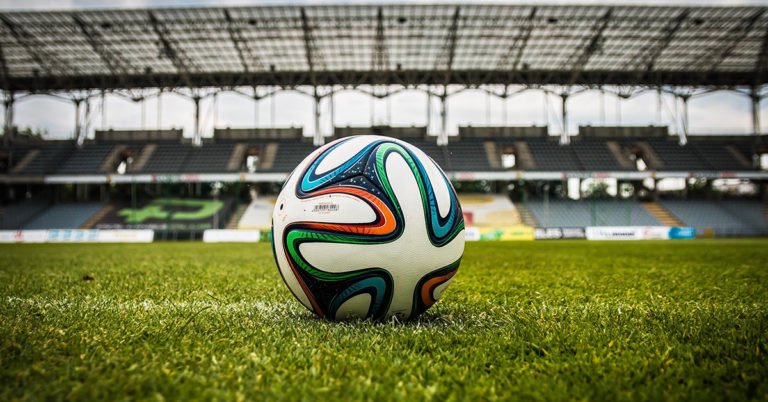
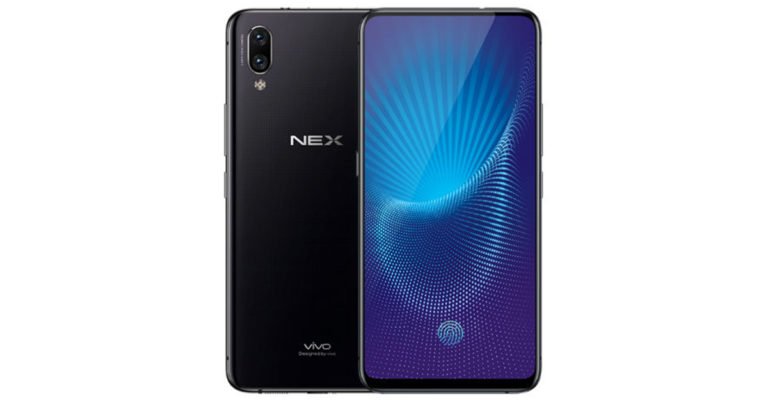
![[Video] Comio X1 Note Unboxing and First Impressions [Video] Comio X1 Note Unboxing and First Impressions](https://www.gadgetbridge.com/wp-content/uploads/2018/06/sddefault.jpg)
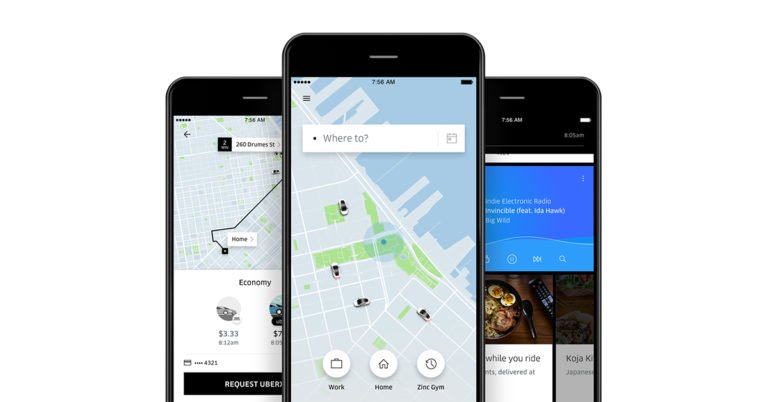
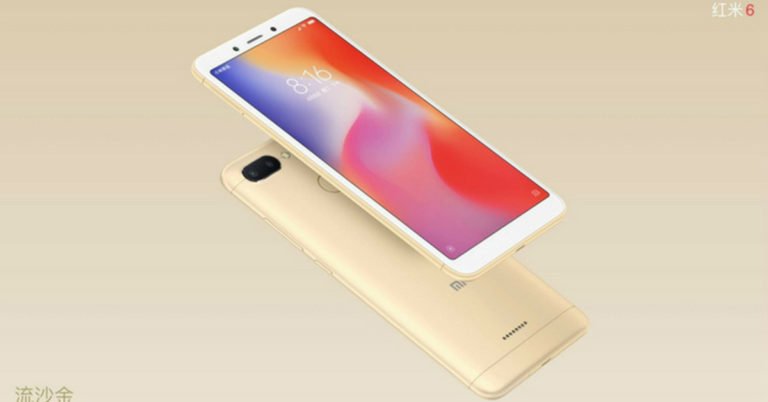

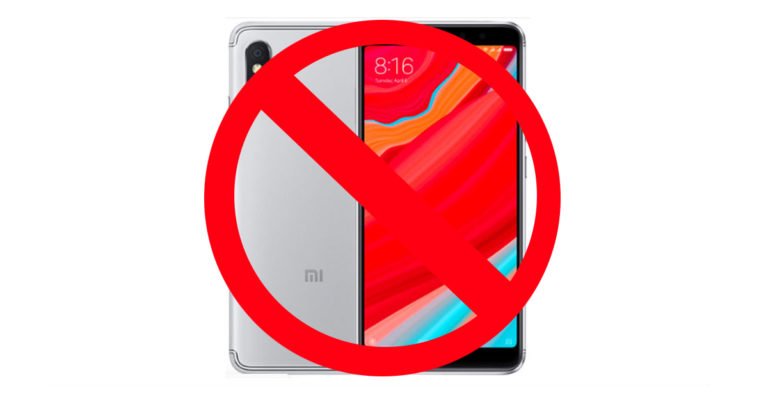
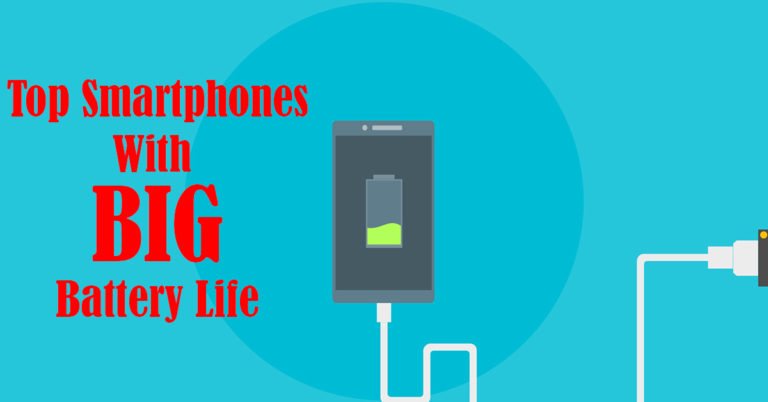
![[Video] Moto G6 First Look and Box contents [Video] Moto G6 First Look and Box contents](https://www.gadgetbridge.com/wp-content/uploads/2018/06/maxresdefault-768x432.jpg)
